Sustainable garden ideas – 28 ways to create an eco-friendly garden
Create a sustainable garden with these expert tips on eco-friendly gardening methods that will benefit your garden, wildlife and your budget
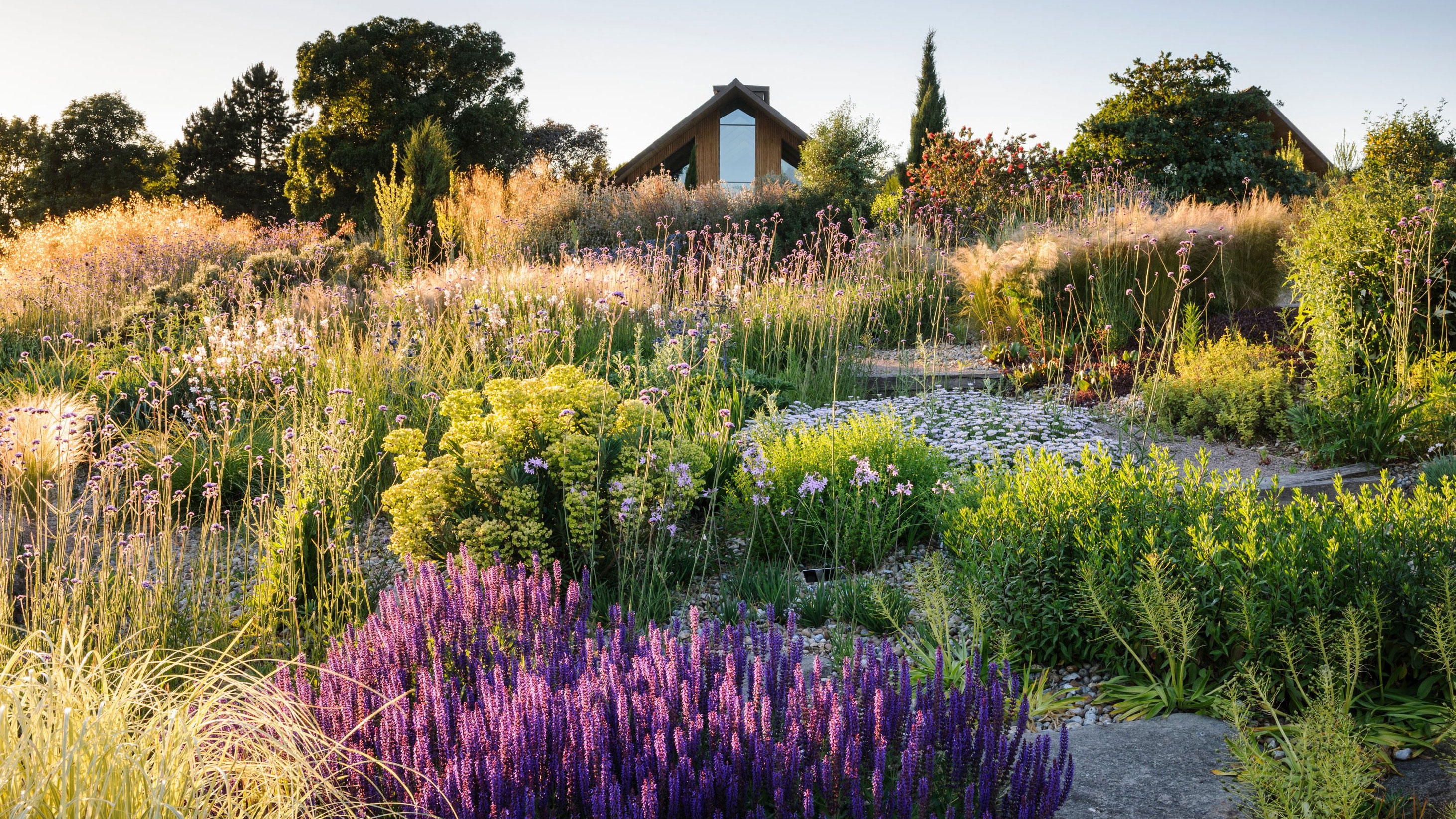

Gardening in a sustainable way is also more economical as it involves using recycled materials, reducing the use of natural resources, and requires less maintenance. Anyone who has a garden, whatever its size, can take steps to transform their space into a sustainable garden buzzing with life.
So if you're looking for creative garden ideas, try some of these simple ways to make an eco friendly garden that’s both sustainable and a haven for wildlife.
Sustainable garden ideas
Having an eco friendly approach to gardening involves putting nature at the forefront of your gardening practices.
Below we have listed the easiest sustainable garden ideas you can adopt to make your back yard just that little bit greener.
1. Plant successional blooms

'A little bit of good garden planning involves trying to ensure there are successional blooms throughout the year. Having different plants flowering at different times will keep a steady stream of crucial pollinators flocking to your garden, working their helpful magic throughout the seasons,' explains August Bernstein, tutor of the Raymond Blanc Gardening School at Le Manoir aux Quat'Saisons, where they grow the delicious organic produce that is used in his renowned restaurant.
Collecting seeds is a costs effective way to keep your flower beds in bloom, by increasing the flowers from your own stock.
In the vegetable gardens and herb gardens at Le Manoir they ensure that there are beautiful flowers in bloom throughout the months of the year that helps to entice in pollinators as well as beneficial insects to keep pests away from the crops. But this approach equally applies to ornamental flower bed ideas, allowing nature to naturally top up and augment the supplies of beautiful blooms.
Design expertise in your inbox – from inspiring decorating ideas and beautiful celebrity homes to practical gardening advice and shopping round-ups.
2. Use companion planting
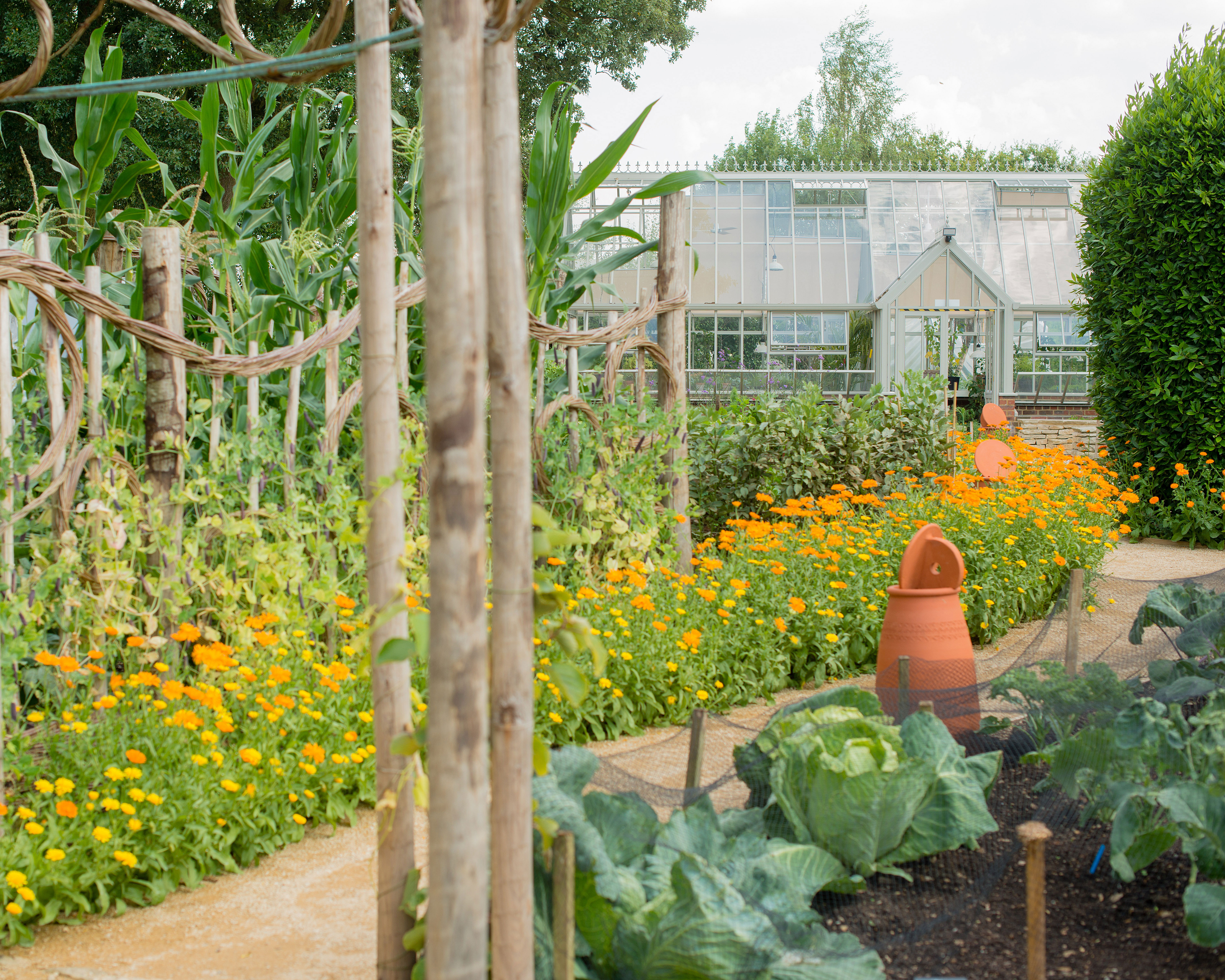
'We use companion planting, such as planting tagetes around our tomatoes to deter the whitefly. Growing garlic and onions in-between our carrots to mask the smell of carrot and deter the carrot root fly is another example of this method,' explains August.
There are many different flowers and crops that can provide benefits when planted next to each other, so do your research and factor this in to your plans when deciding on your vegetable garden ideas. Not only will it reduce the need to use unnatural pest control measures, it will also help improve the health and yield of your vegetable and fruit crops.
3. Cover crops with protective nets
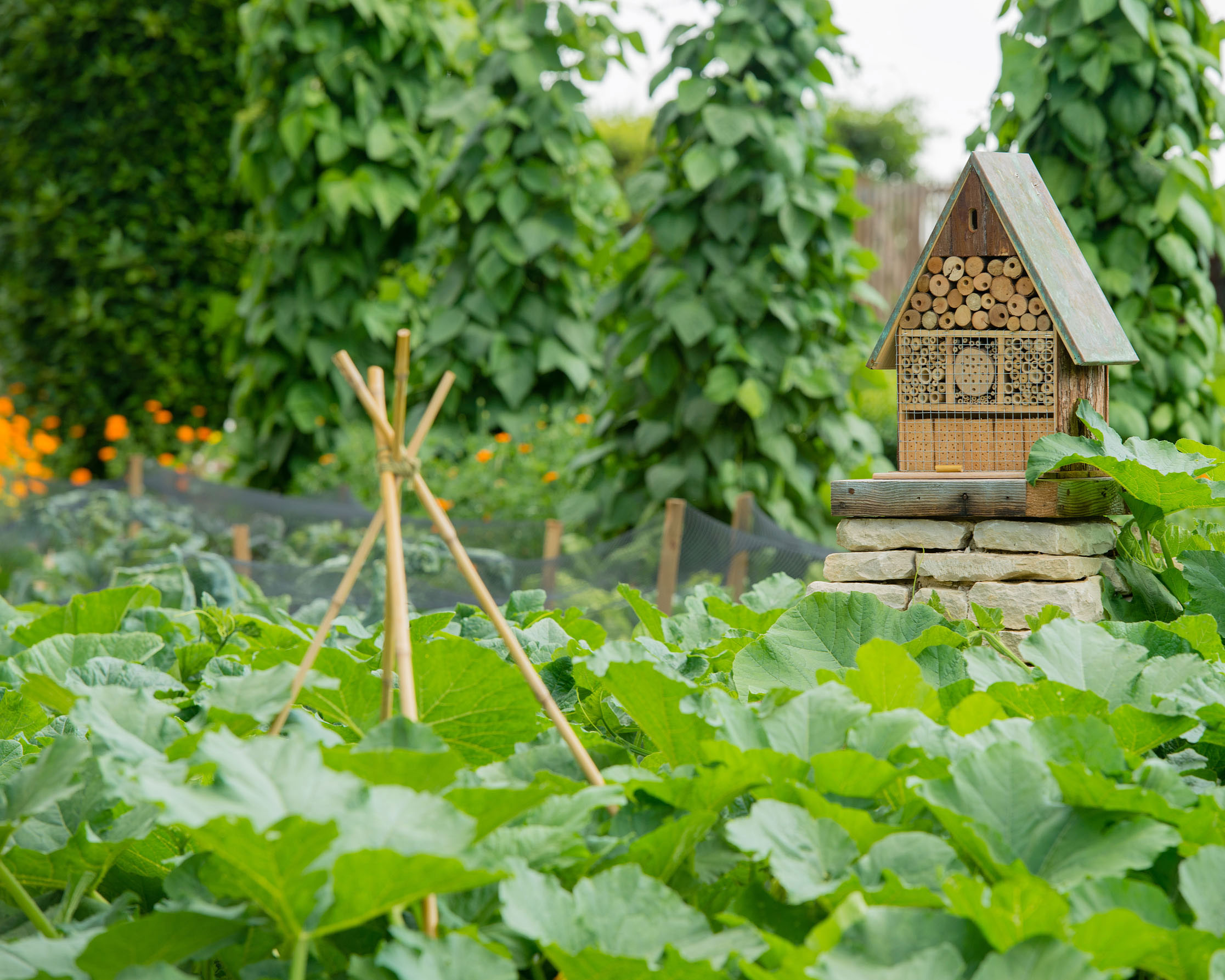
To protect some of your treasured crops from caterpillars and other leaf munching wildlife, try covering them with nets.
'Instead of spraying brassicas, such as brussels sprouts and cabbages, we use a fine net to stop the butterflies laying their eggs on them. It’s worth investing in a strong net so you can use it year after year,' explains August.
4. Keep an eye on the weather
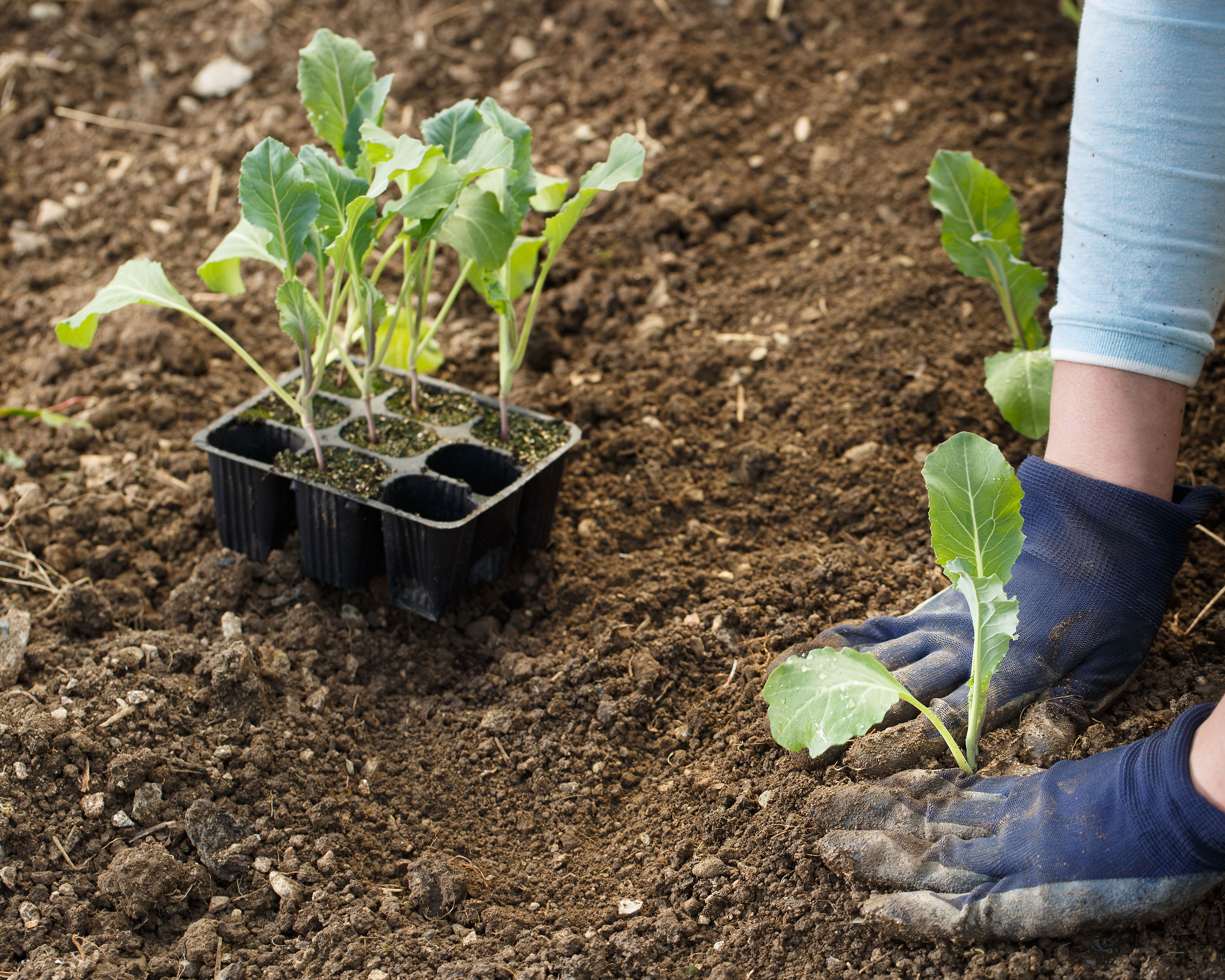
Work with the unpredictable weather patterns and climate change, and plant or sow crops and flowers according to what the weather is doing in any chosen year, rather than assuming you will always plant at the same times every year.
'We always have one eye on the weather. My top tip is to always check the last frost date in your particular area, as we all have different dates throughout the country. It’s all too easy to check on social media and see people planting out their tomatoes, for instance, and follow suit – but your area may have a completely different climate. I see so many disasters. so hold on to your courgettes, beans and squashes until you’re sure Jack Frost has made his final exit in your particular area,' advises August Bernstein.
5. Choose resilient varieties of plants
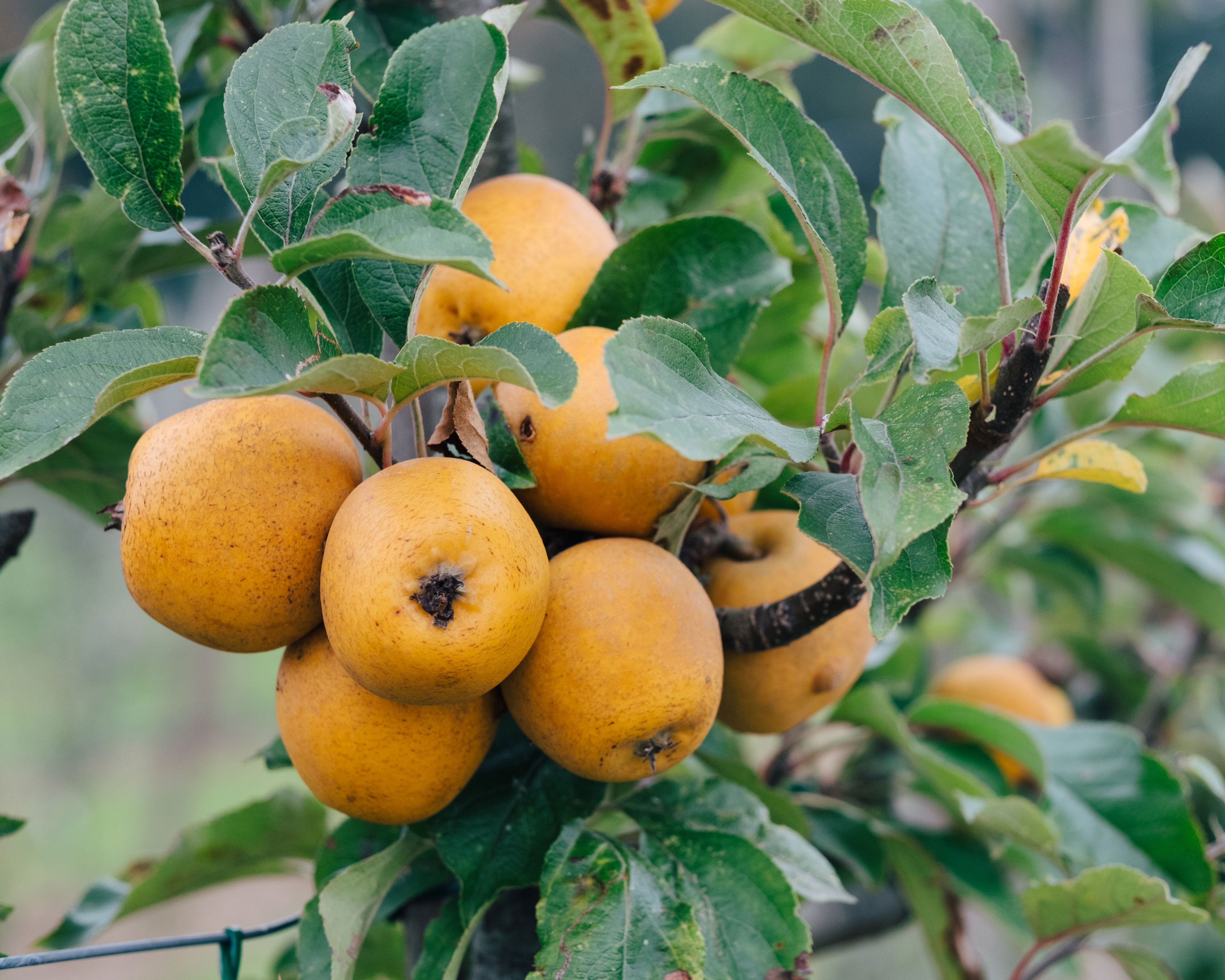
Key to a sustainable garden is choosing the most resilient varieties of plants that can adapt to the weather and conditions. They will then require less intervention and maintenance and help maintain the ecology in your garden.
'Within our Heritage Orchard at Le Manoir, we are looking into particular varieties that may have to replace others due to climate change. It is not just the mild winters and sharp frosts, but also the lack of warmth and cool nights in summer which we need for ripening the fruit. This process gives our apples a familiar sweetness which we are accustomed to. In the last couple of years with some of the apples not being as sweet as they should be. However, some varieties show strength and resilience; these heritage varieties may be our key to sustaining flavor within our orchard for future generations to come,' explains August Bernstein.
6. Improve soil health
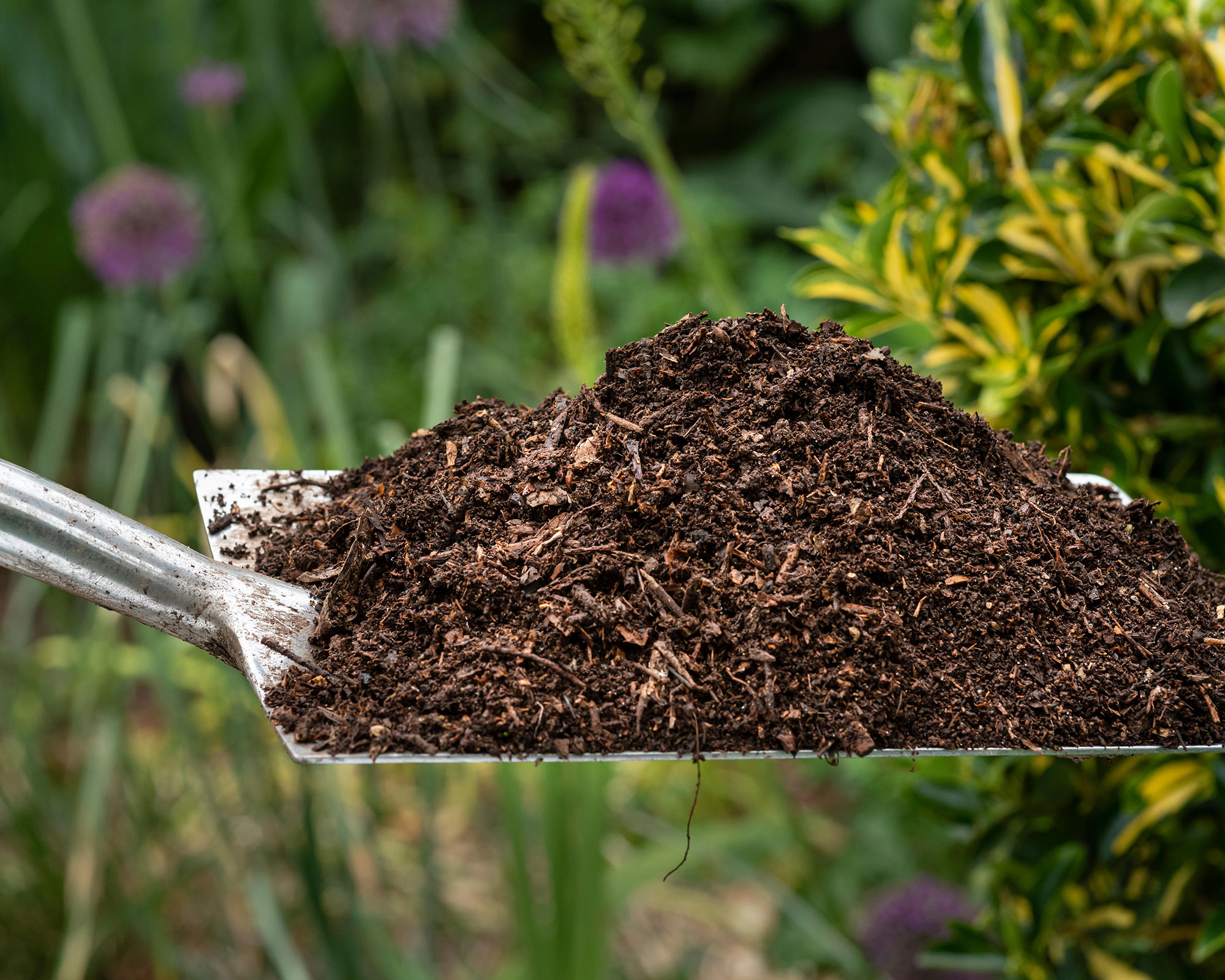
Soil holds the key to creating a sustainable garden, trapping and storing carbon, and providing a home for the billions of microorganisms and tiny creatures that help to maintain the health of the planet. Improving soil quality is also therefore among many wildlife garden ideas.
'Soil is made up in large part from carbon, which it traps beneath the surface but releases into the atmosphere when disturbed. To avoid this, only dig when planting,' advises garden designer Tom Massey.
Learn how to make compost and apply a thick layer of this organic matter, or leaf mulch over the soil, which worms and other creatures will take down into the ground. This will then improve the soil structure and deliver nutrients to plants’ roots.
'Using peat-free compost will also benefit the environment, since the bogs from which it’s extracted are highly efficient carbon sinks and support many rare species,' Tom adds.
'Keeping your soil healthy is absolutely vital to give your plants the nutrients they need to become strong and withstand our changing weather patterns. At Le Manoir we mulch our beds every year with compost, which helps retain moisture and adds food for the soil life to thrive. In turn, the soil life makes nutrients available to feed our crops,' adds August Hudson.
7. Choose native plants
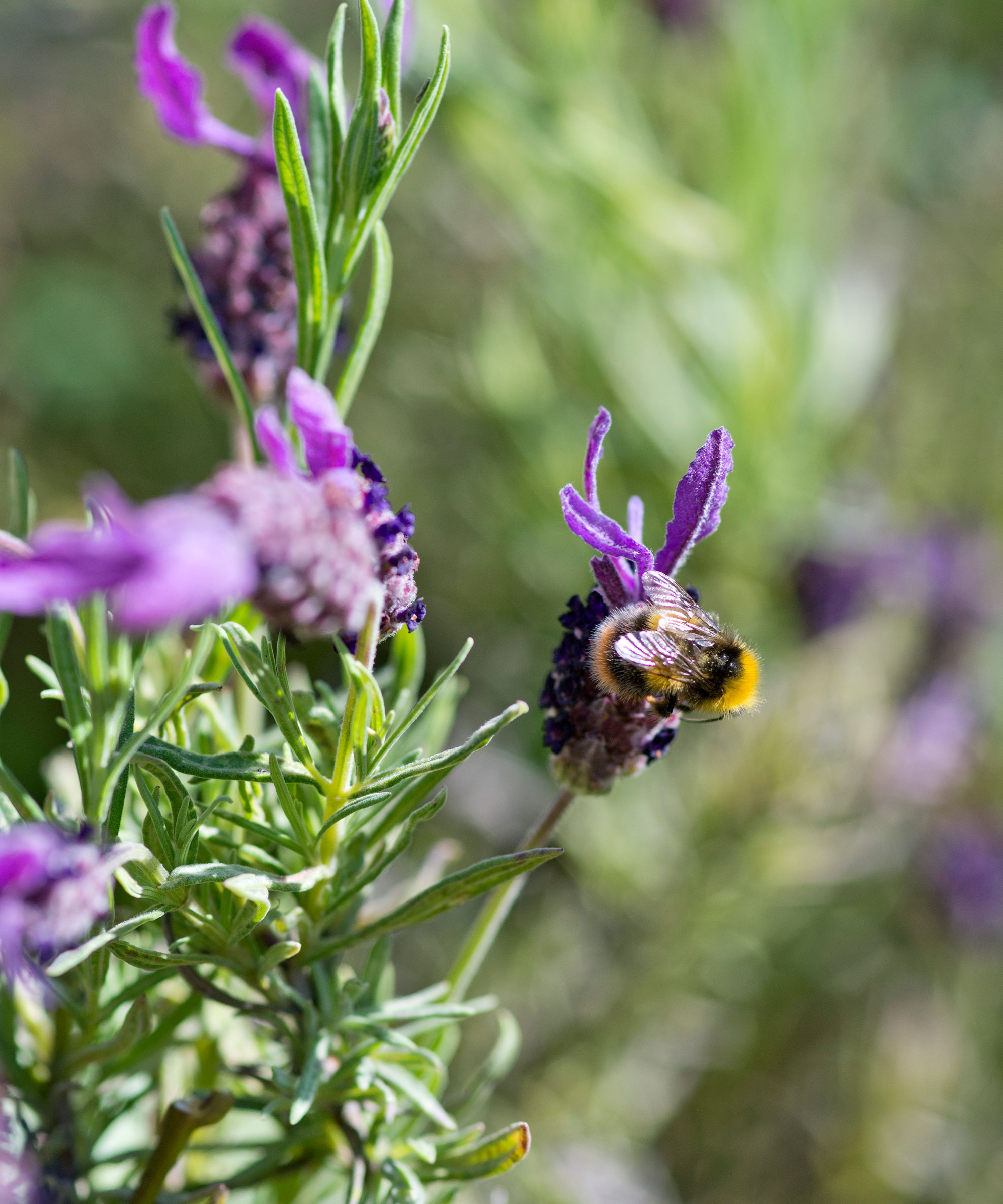
Look to include native plants to support insects and wildlife.
'If you choose the correct plants for the place, they will also require less feeding and watering,' advises garden designer Sarah Eberle.
A naturalistic planting design, using the right native plants in the right place, makes sense ecologically and financially as you won't need to replace plants that don't work. Using native plants, such as creating a wildflower patch, however small, will help and encourage a huge diversity of wildlife.
8. Leave the lawn to grow
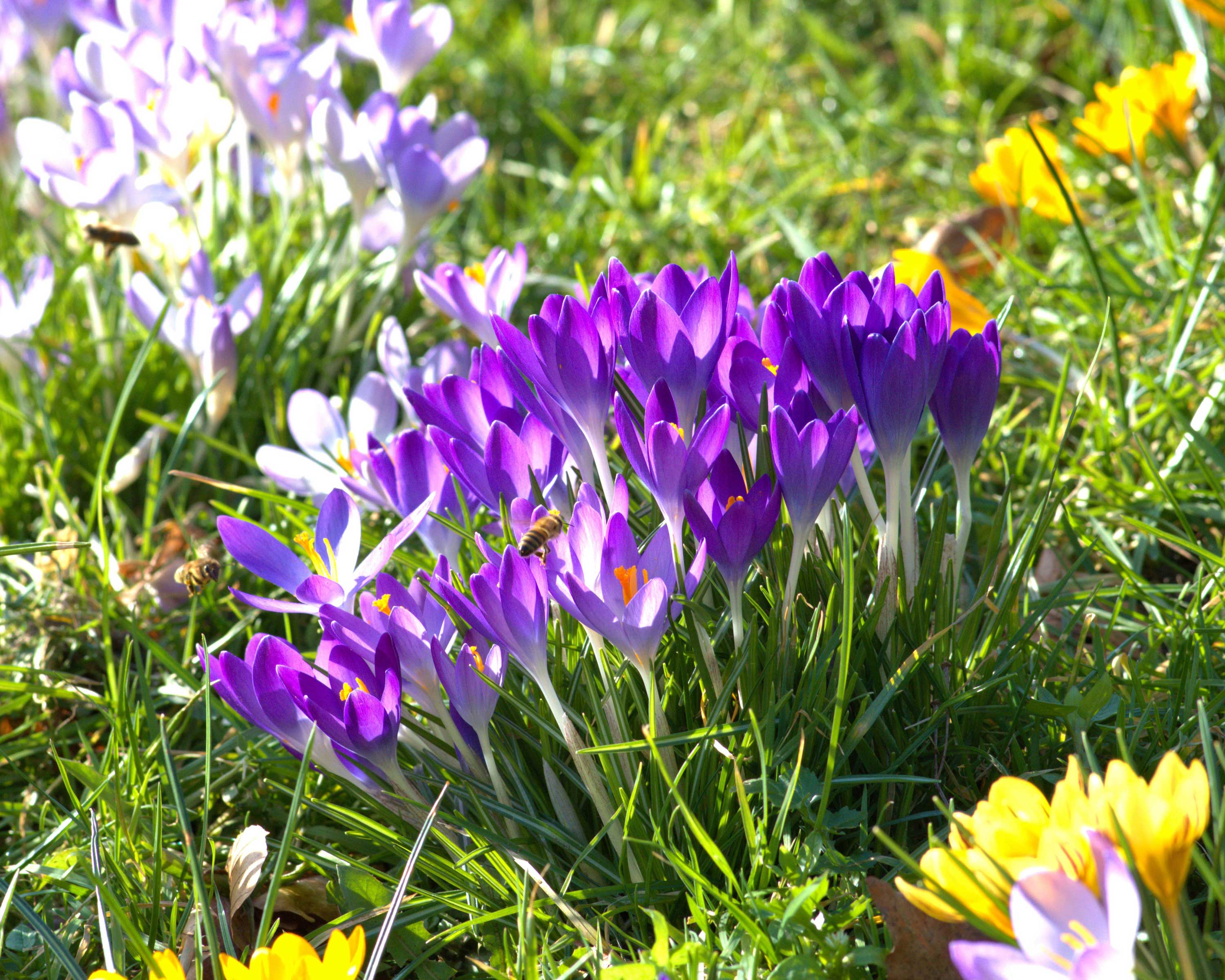
One of the important ways that gardeners can create a sustainable garden is to avoid pristine lawns and leave them to grow longer.
With water shortages and longer periods of droughts being a possible result of climate change, perfectly manicured lawns could become a thing of the past with a move towards eco-friendly gardens.
'Let a lawn go completely and allow the magic to happen – you’ll find native plants such as selfheal, Alchemilla, achilleas, ox-eye daisies and lots more just pop up,' says landscape designer Lulu Urquhart.
'Mow the lawn in late summer, leaving the stems in situ to shed their seeds before removing the clippings. In fall, we also add early spring bulbs such as crocuses, species tulips and fritillaries to embellish the lawn and boost pollen supplies the following spring,’ she adds.
Leaving the grass long also benefits wildlife. 'The tall grass provides a place for wildlife to take cover, create natural habitats and attracts beneficial insects into the garden,' explains August Bernstein.
Reduce your carbon footprint by swapping petrol for electric mowers to cut the lawn, or go one step further and leave the grass to grow. If you still want a green sward, try only cutting from June to September, allowing the grasses and spring flowers to bloom and feed pollinators.
9. Try permaculture gardening to improve eco-credentials
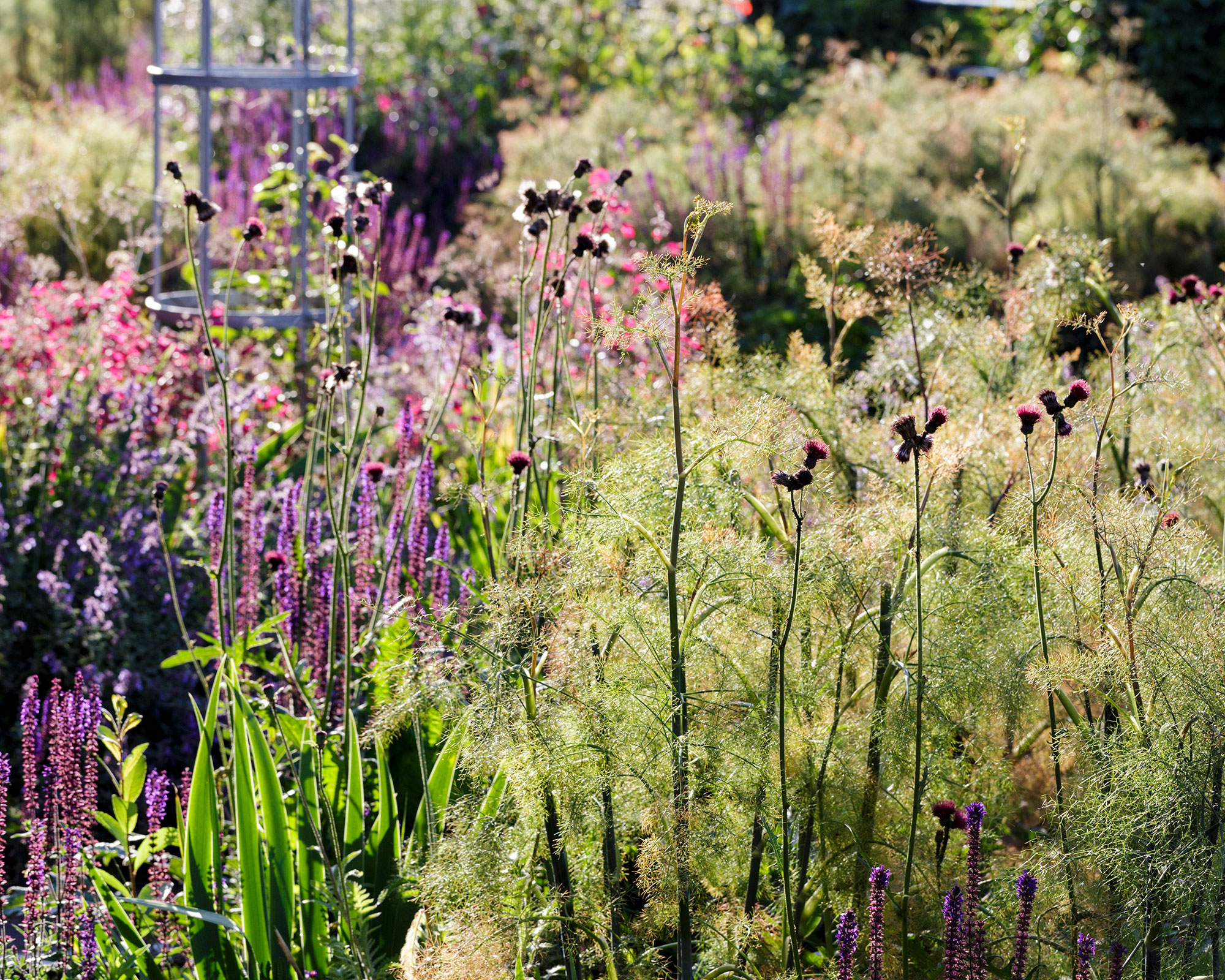
Adopt permaculture gardening as a daily approach to maintaining your outdoor patch. It is – ultimately – the best way to achieve a low-maintenance garden, and you may be doing much of it already.
This approach to achieving a sustainable garden includes using food waste for compost; allowing dead plants to become home-grown mulch; replacing harmful synthetic fertilizers with companion planting and natural deterrents; avoiding the use of one-off plastics, such as plastic pots by using recycled pots, biodegradable plant markers, and so on.
10. Plant a dry garden to save water
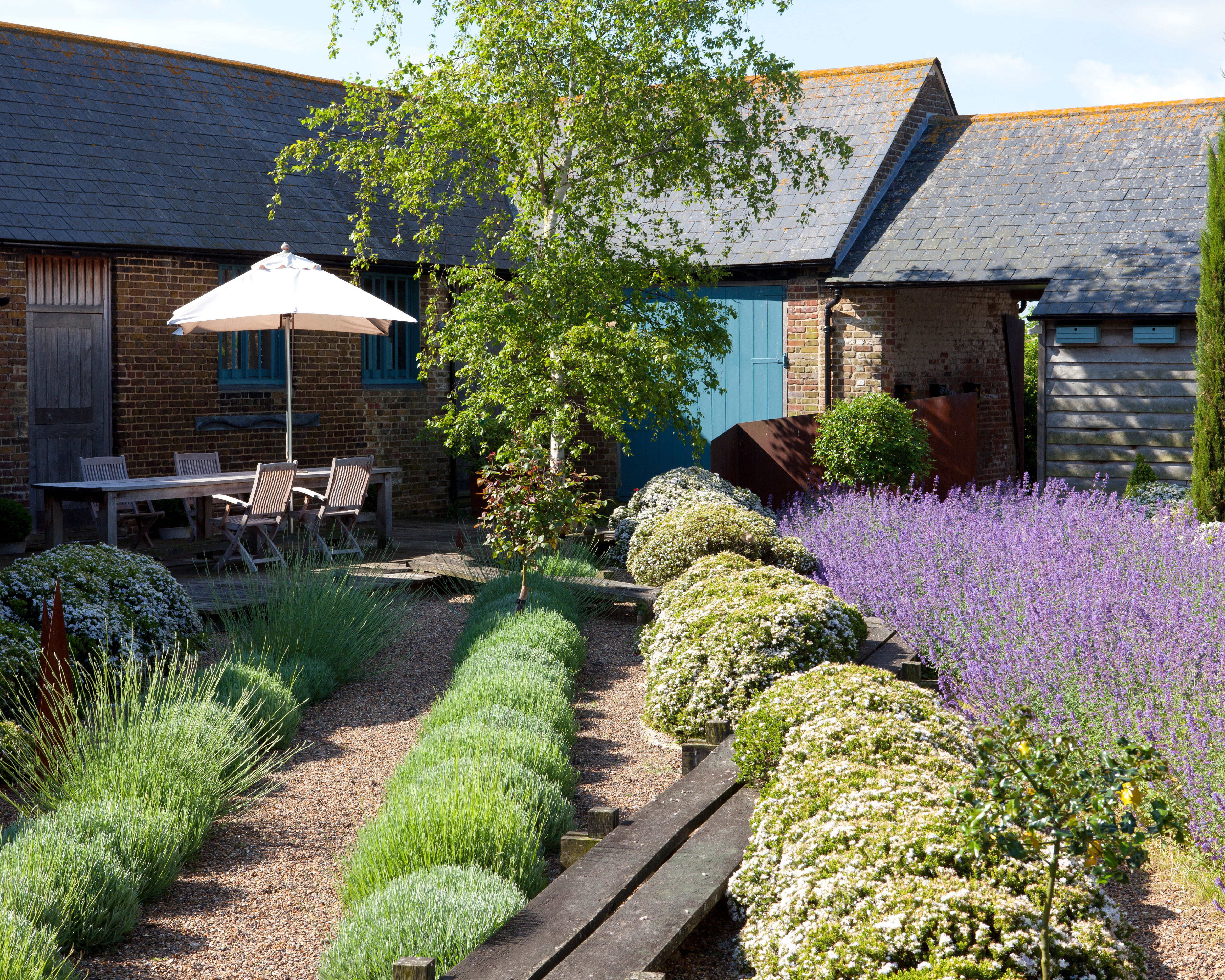
Planning a dry garden is a great eco friendly idea, whether you are reworking a border or redesigning an entire garden.
Dry gardens feature plants that are happy in dry, sunny conditions, such as those you would use if you're looking into how to plan a Mediterranean garden. These feature everything from woody, fragrant herbs to olive trees and need little water to flourish.
They are also a good choice if you are considering sloping garden ideas as such plants can cope better with water run off.
For inspiration look to the dry garden at RHS Hyde Hall, which is a showcase of drought tolerant plants.
11. Plant nectar rich flowers to attract pollinators
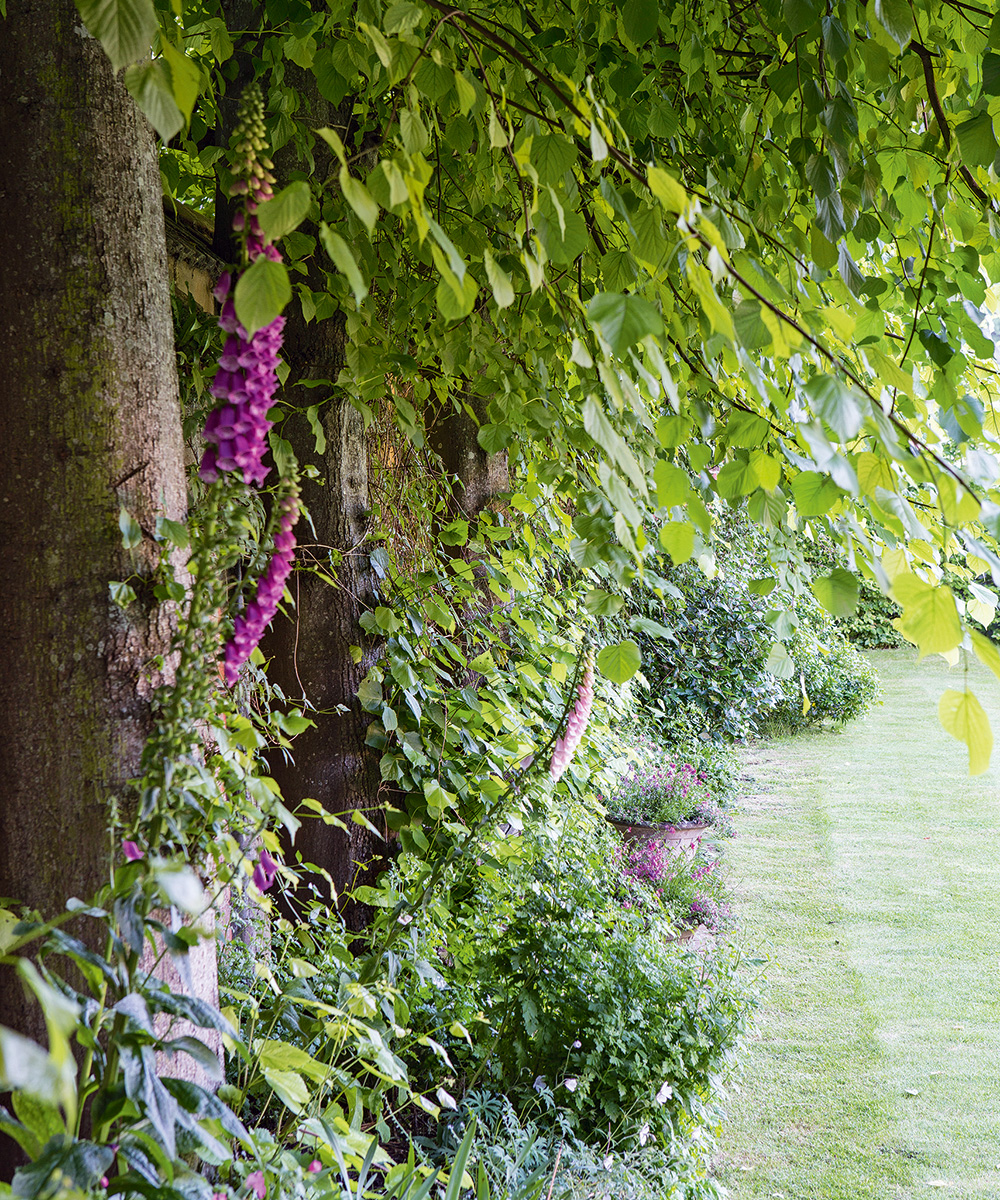
Planting many different species of native plants in your garden, with a focus on flowers rich in pollen and nectar, such as flowers that attract bees, will help to increase biodiversity. It will also help to reverse the falling numbers of bees, butterflies and moths, which are vital to the eco system and therefore all of us.
If you are looking for ways of how to attract butterflies, planting some flowers that they love is just one of the ways you can help in your sustainable garden.
A diverse mix of flowers and plants will make your garden an environmentally friendly safe haven for our buzzy friends and also help your garden to thrive.
The Butterfly Conservation charity advises supporting these beautiful insects by planting buddleia, Verbena bonariensis, marjoram and lavender in warm sheltered spots.
Garden designer Sue Townsend advises also night-scented plants to attract moths. 'Honeysuckle and jasmine will lure them in and the moths, in turn, will attract bats which feed on them,' she explains.
12. Use natural pest control
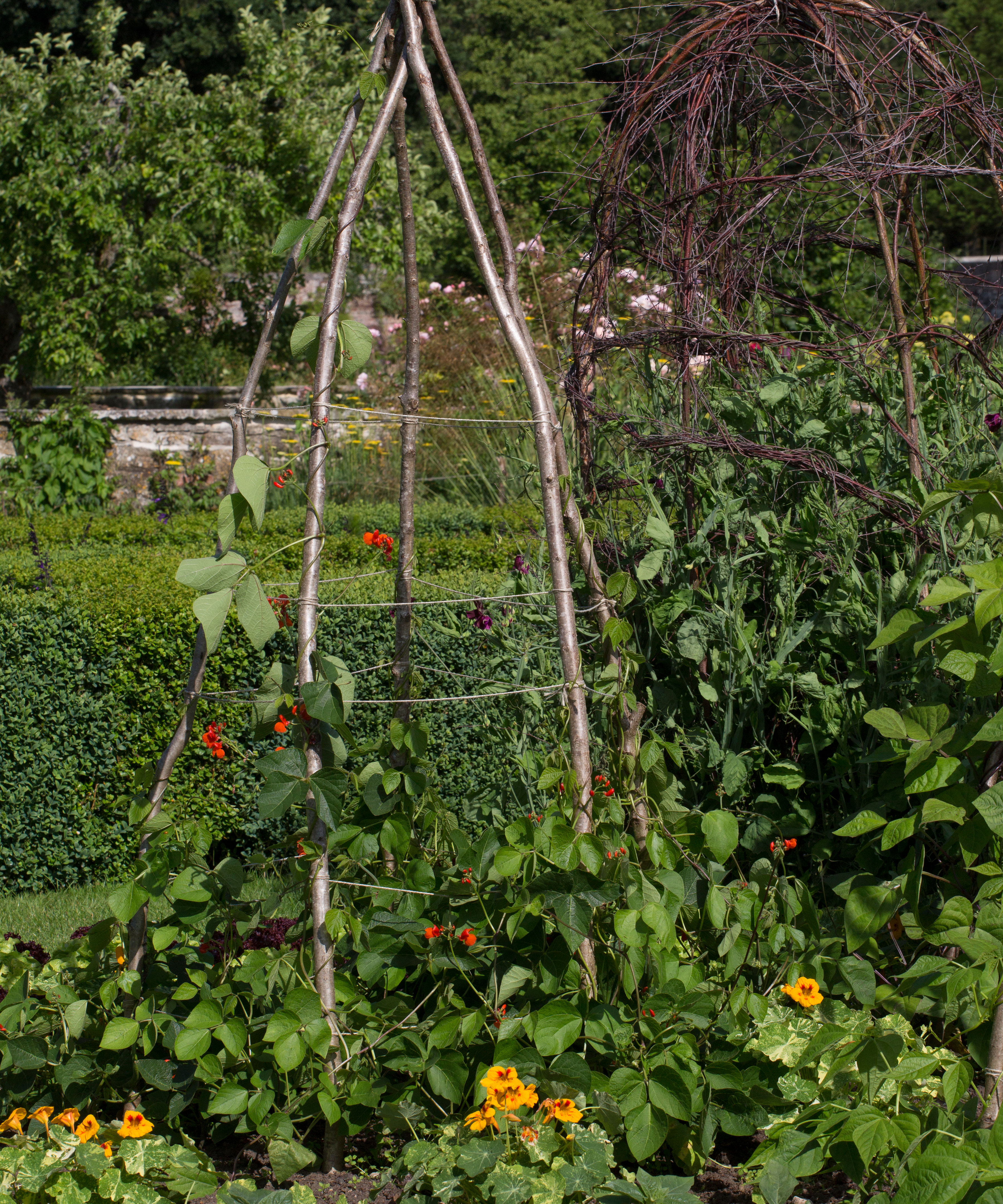
Avoid using pesticides as these are harmful to the garden’s natural inhabitants, but instead use organic growing methods.
A sustainable garden does not rely on chemicals but adopts a gentler approach through natural pest control. Add in companion planting when finalising when to plant vegetables, and sustainable fertilizer, including homemade compost and mulch.
13. Collect rainwater
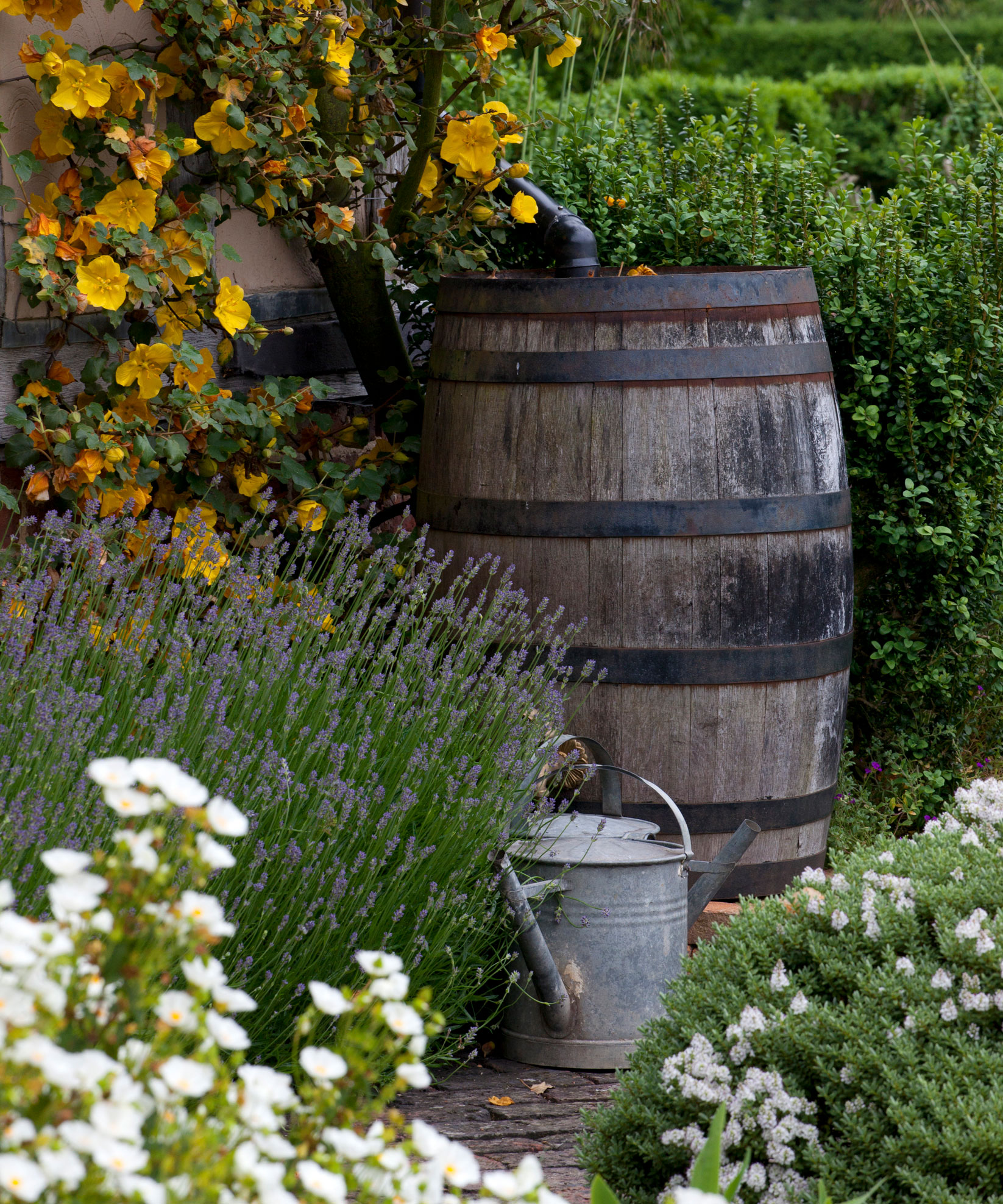
Start put rainy weather to good use for your sustainable garden by purchasing a water butt or use a large container to collect the rainwater from your downpipes.
The water collected can then be used to care for your plants, conserving water but still giving your shrubbery the refreshing drink it needs after a sunny day.
While conserving water, try to avoid using the hose and sprinklers and invest in a trusty old watering can.
14. Feed the birds
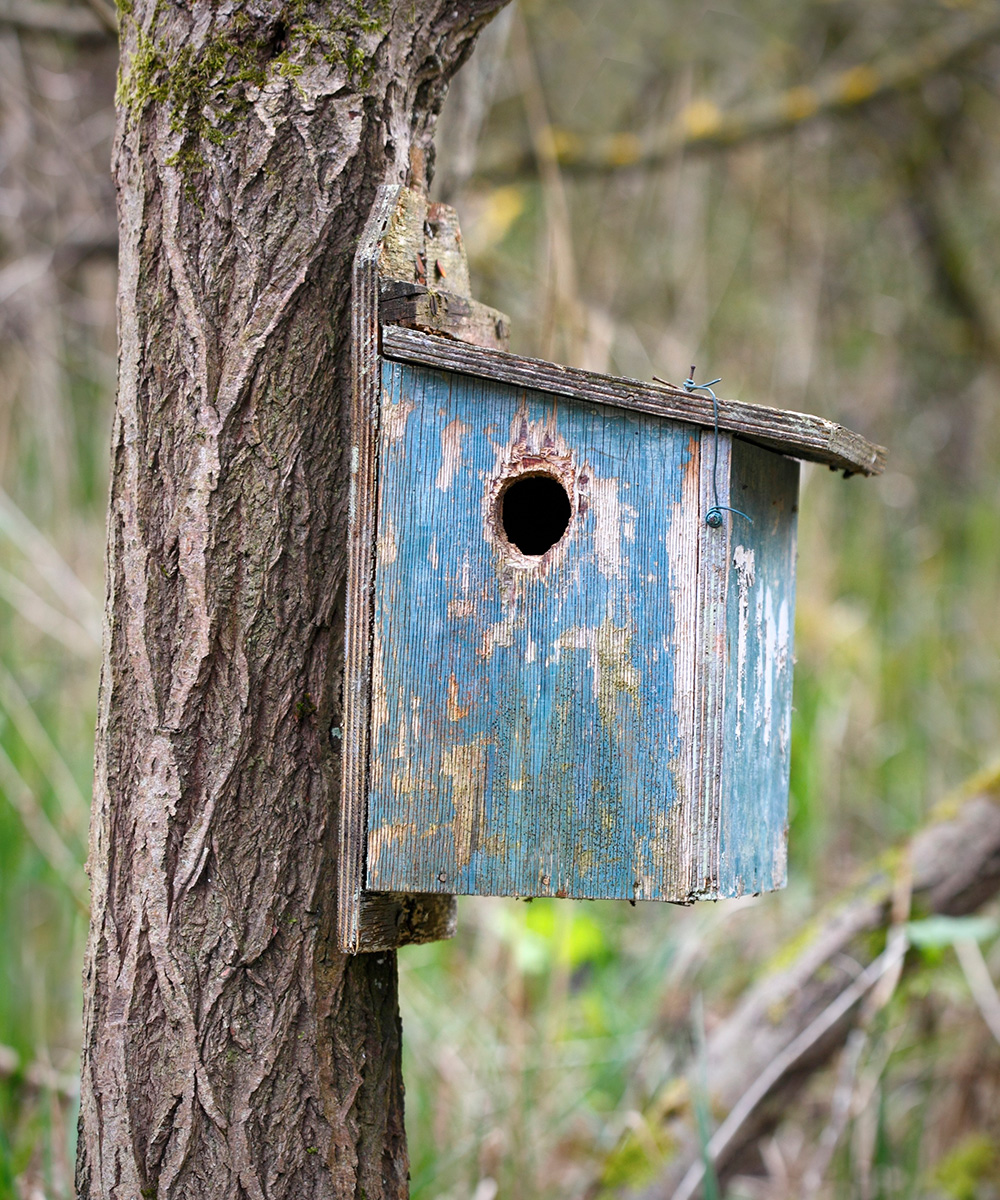
A great way to attract more birds to your garden is to simply put out food – Monty Don's bird feeding tips will help you do this effectively. Hanging a bird feeder from a tree or scattering bird seed over the lawn will have your eco friendly garden filled with bird song in no time – but why not go one step further and create a bird feeder from scratch?
There are plenty of resources online that demonstrate ingenious ways to create a bird feeder at home, using recycled materials such as plastic bottles, glass jars or scrap wood. While you’re at it, you can get creative in the kitchen and bake some tasty bird treats to hang up in the garden.
'Also remember to provide food for birds with evergreen shrubs with berries, such as holly, cotoneaster and the guelder rose, Viburnum opulus, to feed them through fall and winter,' ads Sue Townsend.
Remember, feeding birds in winter is vital to them returning year-on-year.
15. Grow your own vegetables
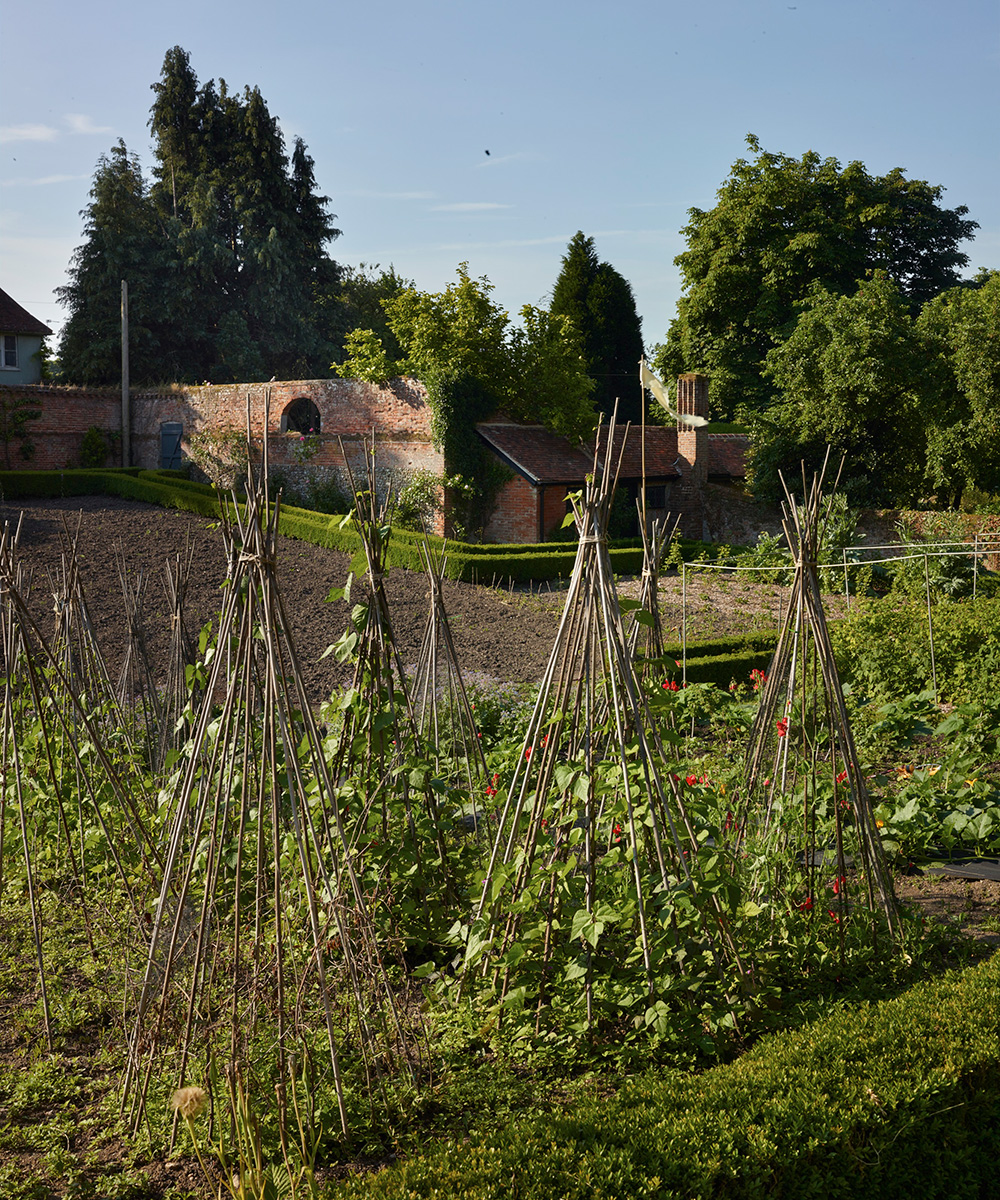
Reducing food miles by growing your own vegetables and fruit is fun and easy to do.
'All you need for a small vegetable garden is a small area in a sunny spot. Edible plants can be as pretty as ornamentals and they’re brilliantly satisfying. Try easy crops such as kale and pak choi as vegetable garden container ideas, and squashes, courgettes, perpetual spinach, chard and runner beans in the ground,' says garden designer Ann-Marie Powell.
'I feed mine with seaweed fertilizer and use nematodes to keep the bugs at bay,' she adds.
You can also lower your food miles even further and add to your eco friendly garden credentials by buying seeds from companies that harvest seeds from crops grown organically.
Planning a kitchen garden is a fun and rewarding thing to do, but it will also cut down your CO2 emissions and packaging wastage. Homegrown vegetables are often more nutrient-rich and pesticide-free. You can also maximize the space available with vegetable garden trellis ideas.
16. Plant more trees
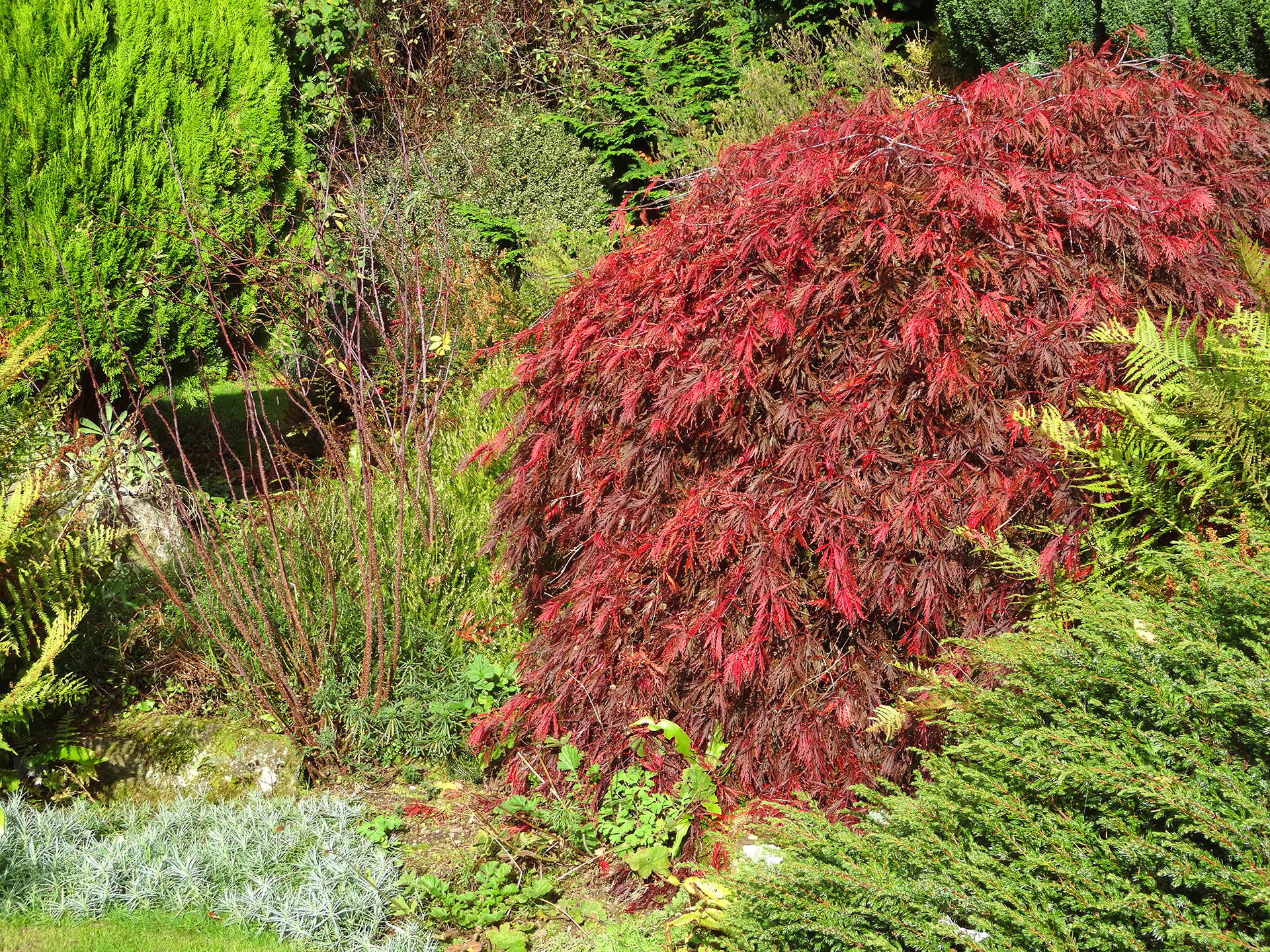
As part of your sustainable garden plans, definitely one to include is planting more trees. Trees benefit the planet while adding color and structure to your garden.
Select a mix of species that are right for the conditions in your back or front yard. Even if you have a small backyard, there are plenty of trees for small gardens and trees can also provide varied color and interest through the seasons if you choose trees for autumn color or evergreen trees.
'Every tree planted is a credit to the environment, absorbing carbon dioxide from the air and releasing the oxygen we need to breathe. Living trees also store carbon in their trunks, branches and leaves, preventing it from escaping into the atmosphere,' explains Mike Glover, MD of Barcham Trees.
Some trees are better than others, and large trees that live for a long time offer the biggest benefits to the planet, so consider these points when choosing one for your garden, although any tree is a goo choice.
'For a medium-sized garden, my personal favourites, all of which have good eco-impact ratings, include the beautiful maple, Acer platanoides ‘Princeton Gold’, with its early yellow leaves that darken to green in summer; the gleaming white-stemmed Himalayan birch, Betula utilis jacquemontii; Malus ‘Rudolph’, a disease-resistant crab with bright pink blossom and pretty fall fruits; and the ornamental pear Pyrus calleryana ‘Chanticleer’, which has stunning fall colors,' Mike adds.
To ensure that your chosen trees thrive, make sure you know how to plant bare root trees or evergreens to get them off to a good start.
17. Filter pollution with plants and trees
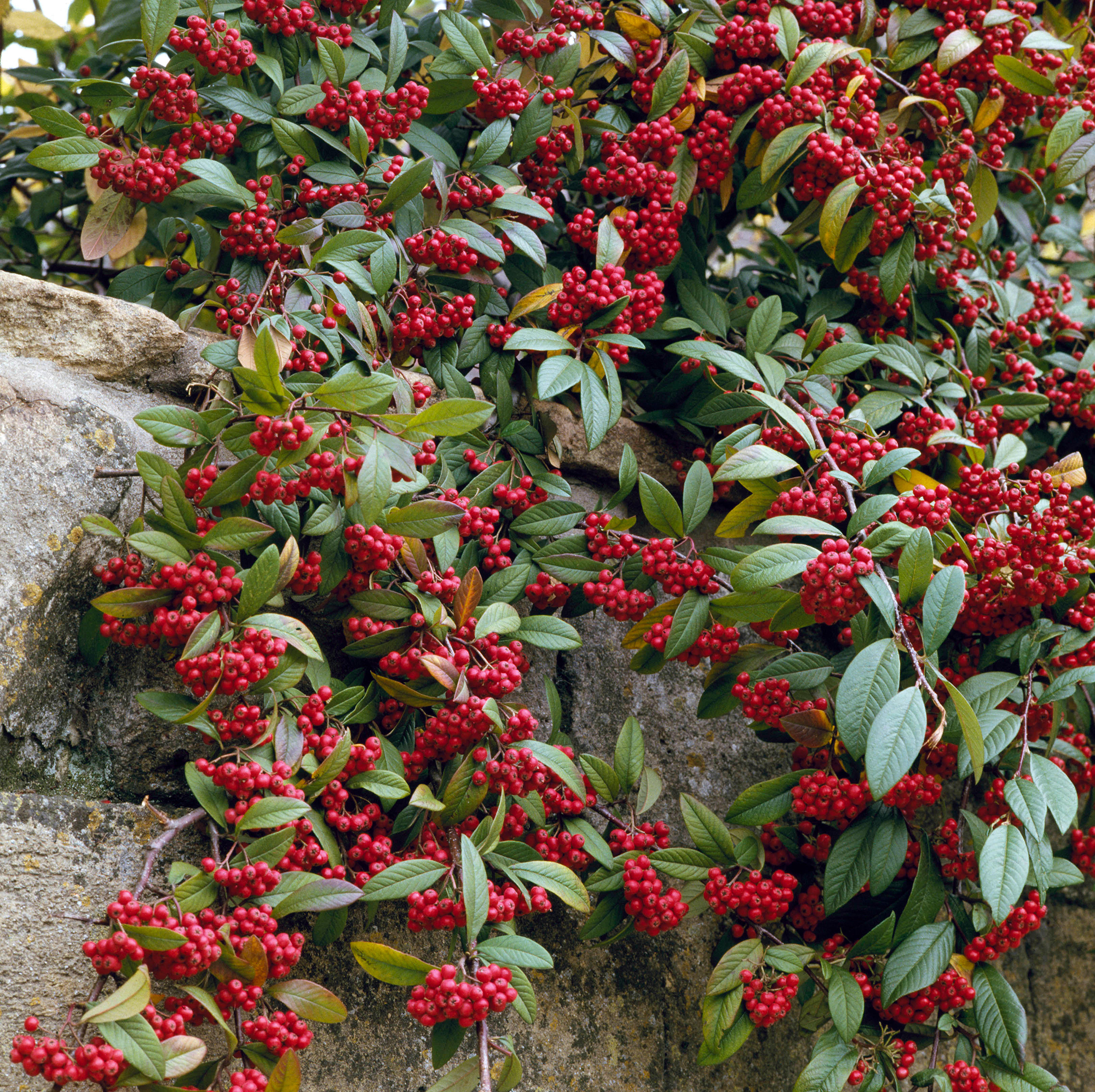
Some plants can help to protect us from the harmful effects of tiny pollution particles emitted from vehicle exhausts, which can increase the risk of diseases such as cancer.
Research by the Royal Horticultural Society shows that shrubs with hairy, scaly, waxy or rough leaves trap these pollutants, making these ideal plant choices for gardens next to busy roads.
The evergreen shrub Cotoneaster franchetii was found to be most effective, while yew, holly, hornbeam and hawthorn also worked well.
'We have an ‘eco-impact rating’ for each of our trees, which tells customers how much pollution filtration, carbon sequestration and carbon storage they will achieve over their lifespan,' says Mike Glover.
One of the best is hornbeam (Carpinus betulus), also one of the best trees for privacy and screening in a backyard, and most oaks, to the lowest E rating – the stag’s horn sumach, Rhus typhina and Persian silk tree, Albizia julibrissin, fall into this group.
'However, all trees have a positive impact on the environment so planting any tree is better than not planting one at all,’ adds Mike
18. Plant hedges for boundaries
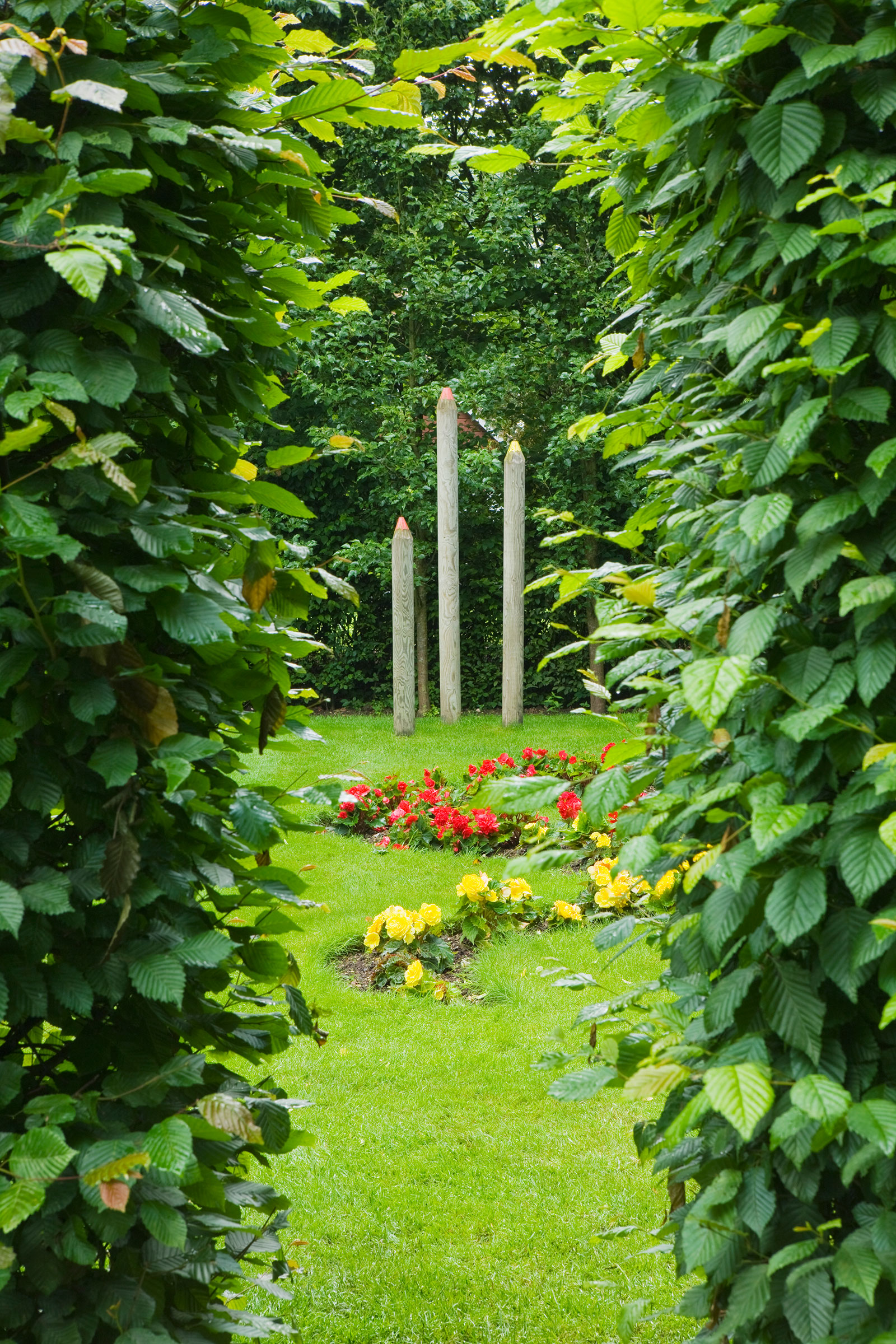
Hedges are good for the environment by absorbing pollution but also provide shelter and food for wildlife.
'Plant a yew hedge along a boundary to create a head-height barrier, with pleached hornbeams above that. The clipped hornbeams look wonderfully architectural in summer and winter, when the leaves turn bronze, especially against the dark veil of the yew,' explains garden designer Harry Holding.
You can use mixed fast growing hedges in rural areas and more dense, evergreen hedging for urban gardens.
19. Upcycle garden furniture
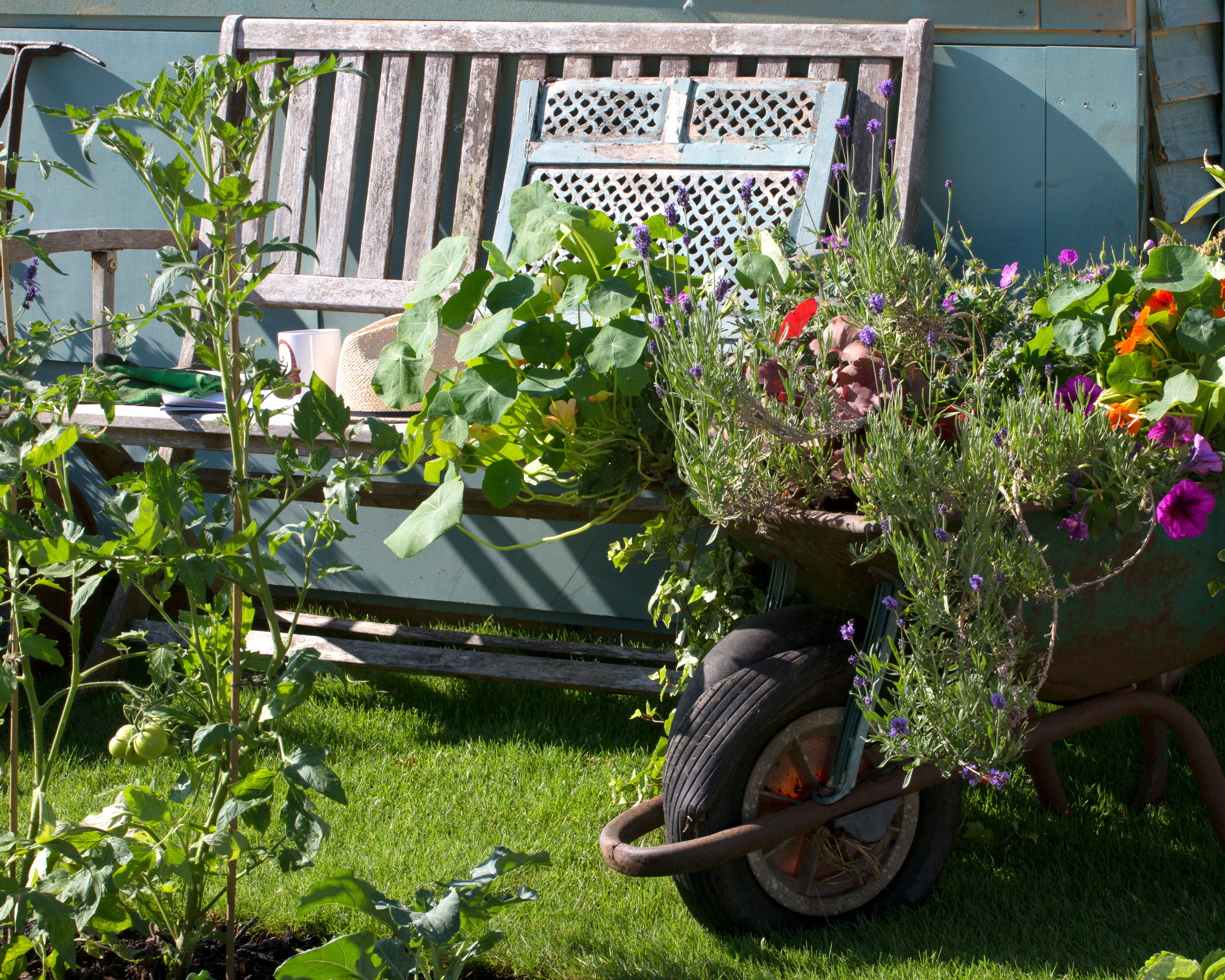
From containers to tools and furniture, get creative and reimagine discarded items into useful objects in the garden or veg plot.
It can be tempting to buy the newest outdoor furniture when hot days roll around, however, there are plenty of great items at your disposal already – they might just need a little love and attention.
Head to your local hardware store and buy some sandpaper and paint, give that tired old garden bench a rub down and a fresh lick of paint, and it’ll feel brand new in no time.
Alternatively, take a spin around the local charity shops to see if there is any furniture you can repurpose, such as wooden chairs or tin baths for the birds. This is a great way to donate to a good cause while giving pre-loved items a new home.
20. Create animal shelters
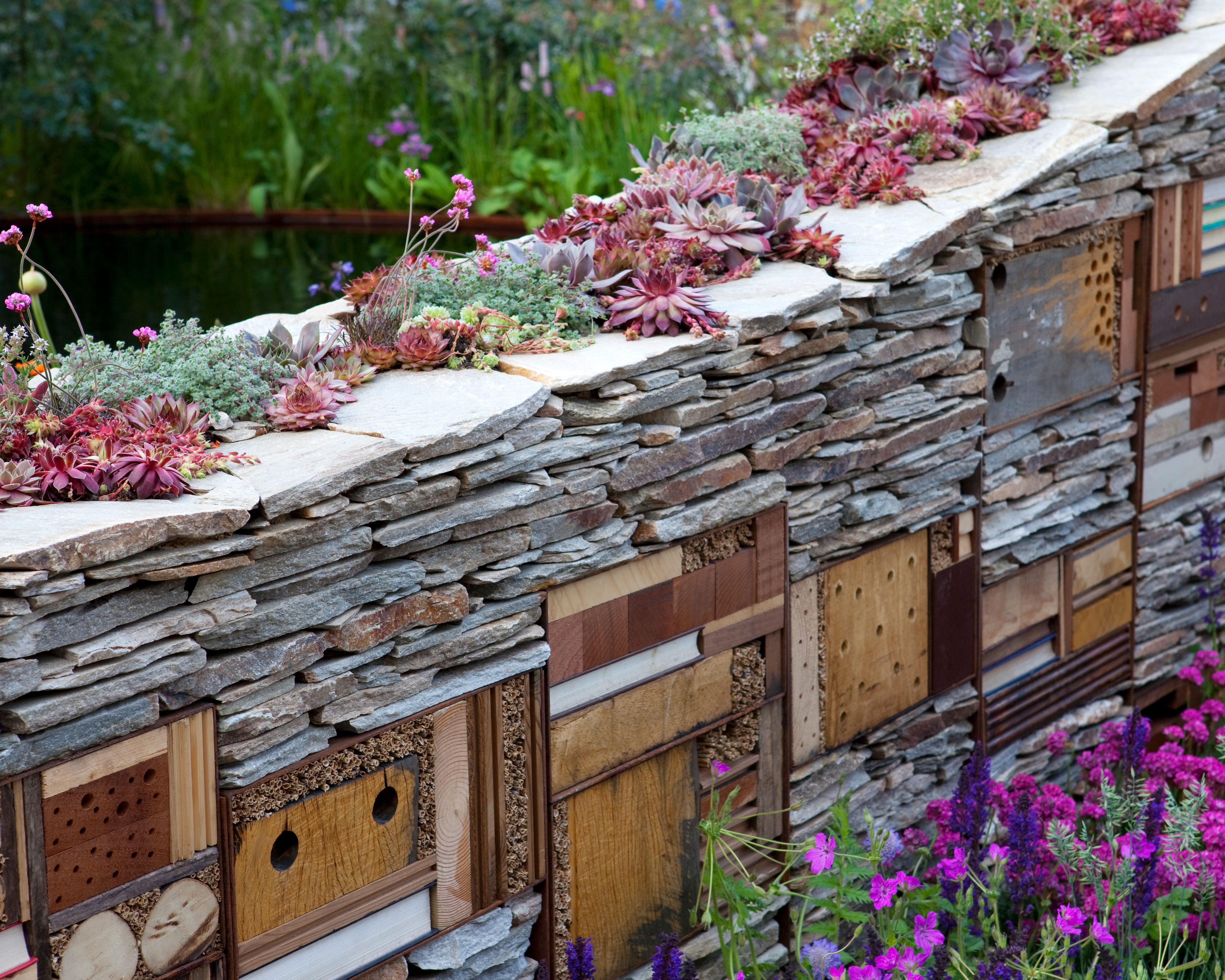
If you create a sustainable garden then soon it should be visited by a host of wildlife looking to explore, feed and possibly take shelter.
'Untidy areas of the garden are a sanctuary for wildlife, which I’m sure will be music to every gardener’s ears! At Le Manoir, we leave log piles for wildlife to use as a home. We also have insect hotels within our Heritage Garden, creating a space for them to hide out until Mother Nature gives the wake up call to come and get busy in the garden,' explains August Bernstein, tutor at the Raymond Blanc Gardening School.
Install shelters for different animals and insects – you can easily learn how to build a bug hotel, or you can add bee and butterfly houses or hedgehog houses to your garden. There is an abundance of ideas to help in rewilding your garden and making wildlife feel more comfortable.
Be sure to position shelters for nocturnal or more timid animals, such as hedgehogs, in a quiet, secluded spot in the garden, somewhere out of the wind and direct sunlight to create a relaxing, restful environment.
21. Make your own compost
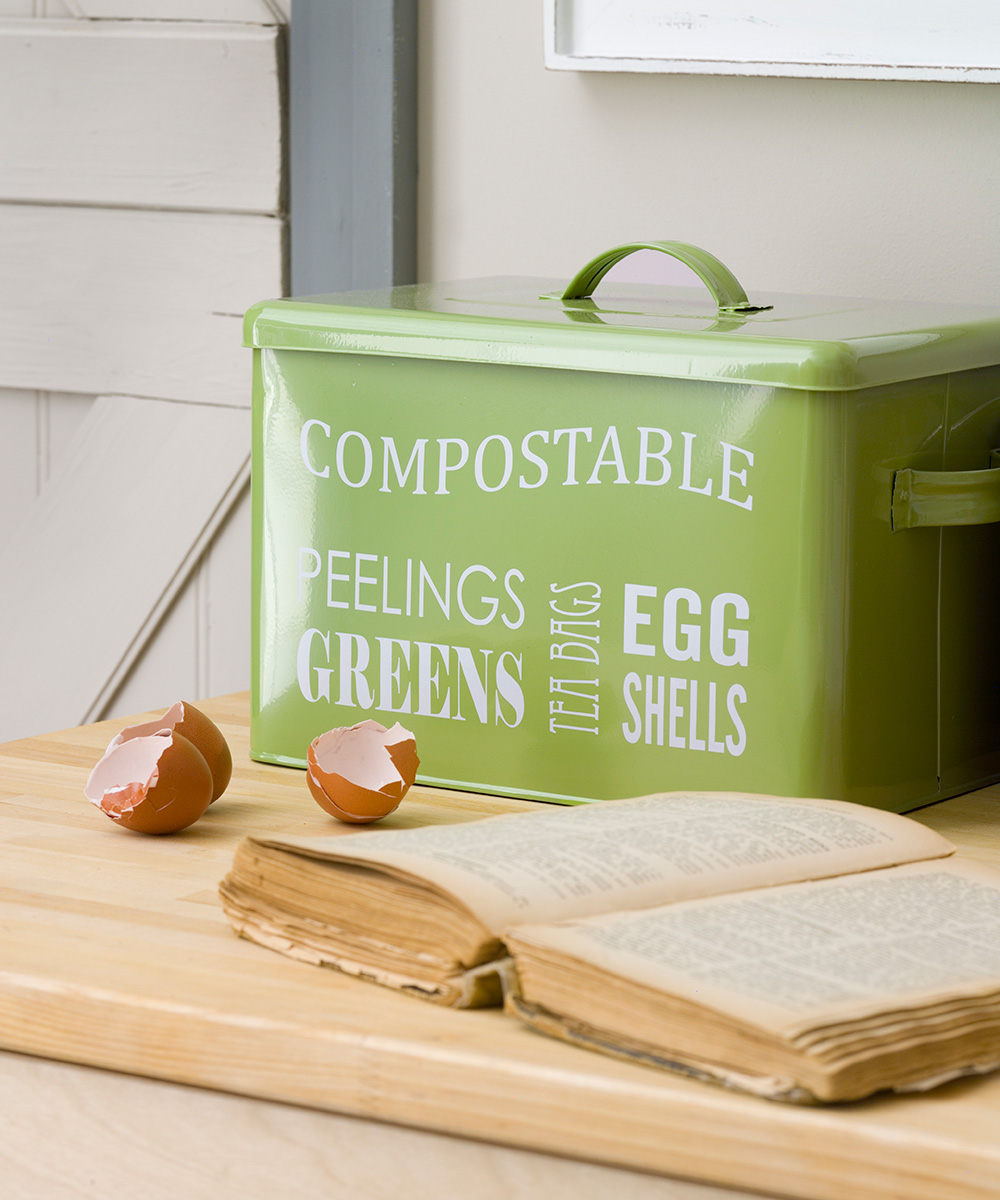
Food waste bins are becoming increasingly common, but don’t simply leave your food waste for the garbage collectors. Over time, food waste breaks down to form a wonderful compost that will do wonders for your garden plants. An easy and speedy way to turn kitchen waste into nutritious plant food is by learning how to use a wormery for compost.
Use all the decomposable left-overs from your meals to feed the plants and flowers in your garden – from peas and beans and to egg shells and banana skins, these unwanted scraps are the elixir of life for your garden.
More natural than shop-bought compost and a great way of reducing landfill waste, making your own compost is an easy way to save the environment whilst saving money on the upkeep of your garden.
22. Add a water feature
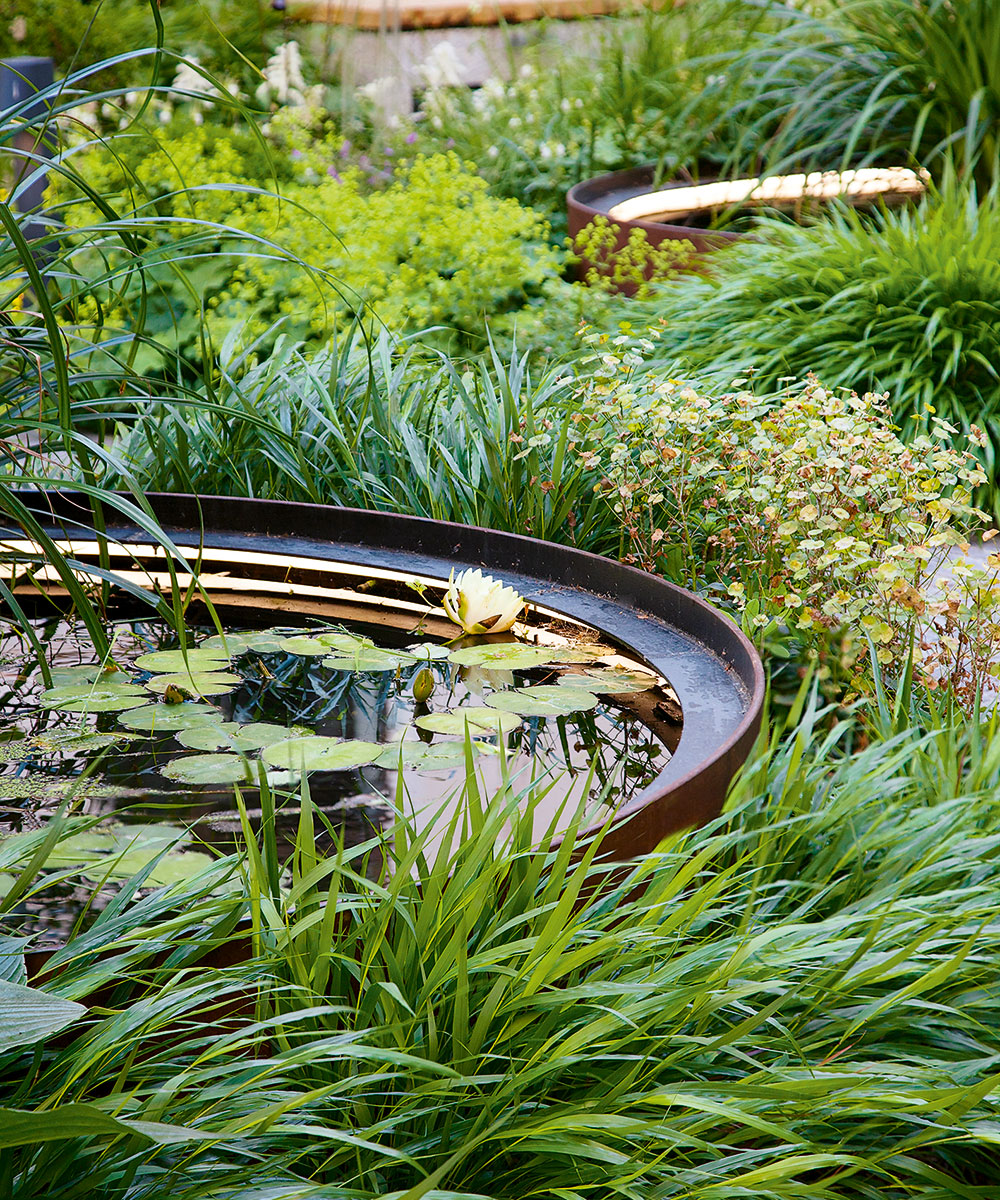
If you have the space, water feature ideas are not only an attraction for humans to enjoy, they are also a treat for many amphibious creatures and insects in search of somewhere wet to put down roots.
'In the Heritage Garden at Le Manoir, we have sunken barrels creating a pond to entice toads, birds and our prickly friends the hedgehogs into our garden. These little friends feast upon slugs and help you combat the frequent attacks gardeners face,' explains August.
Garden pond ideas provide a source of water for many thirsty birds and mammals, which is especially beneficial during the warmer summer months.
Just remember, if you’re hoping to introduce fish to your garden, you’ll need to ensure your pond is deep enough for them to thrive and bear in mind that shallow ponds freeze over in winter. Also design a pond so that there's a safe exit for any animals that fall in to exit from.
There are many useful guides available if you're wondering how to build a pond,
23. Create natural flood defences
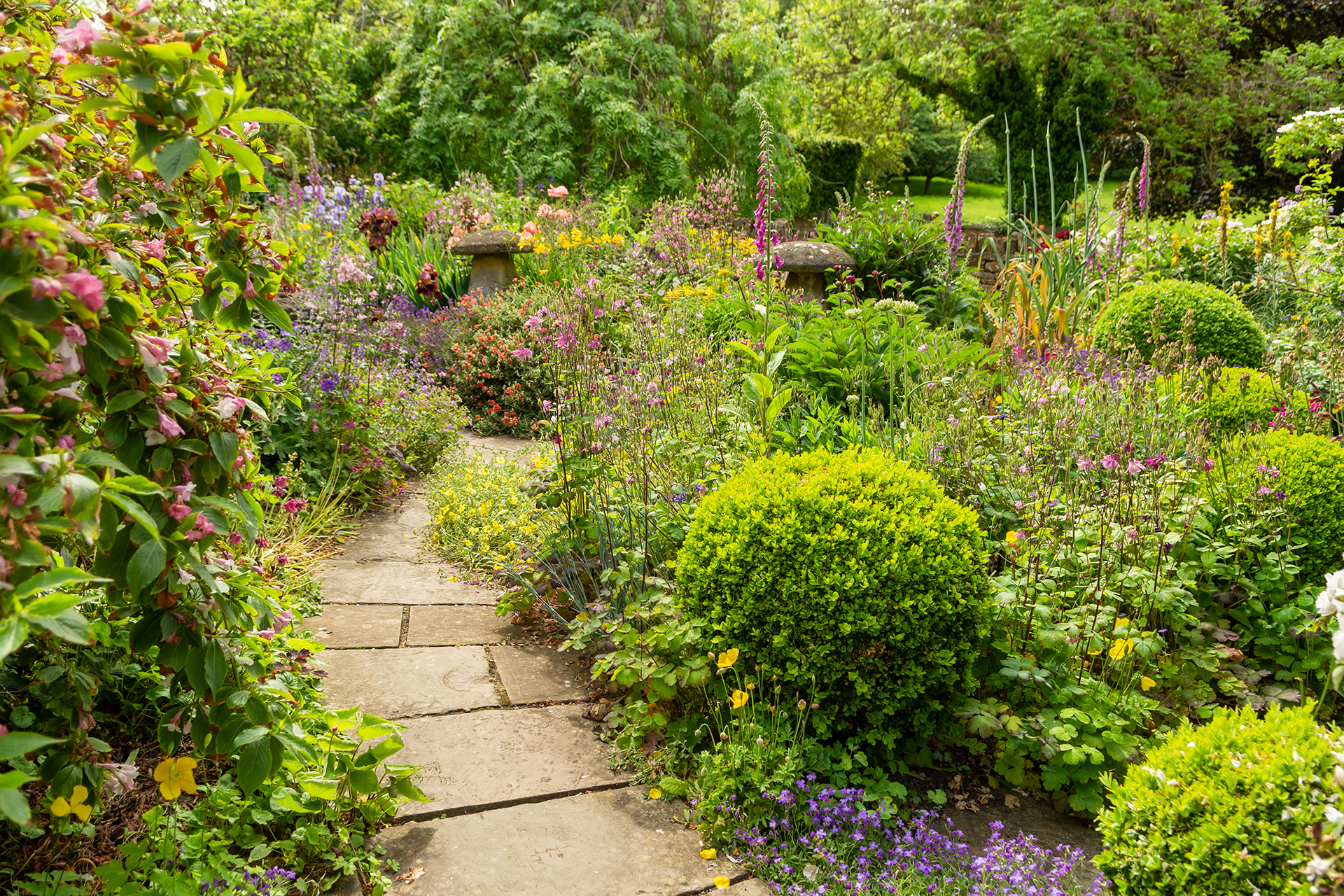
As water gushes from a garden into the storm drains in the street, it picks up pollutants, such as fertilizers, oil, and animal faeces, which can then go on to contaminate rivers and oceans.
However, plants can help to mitigate this problem. 'The leafy canopies of trees and plants trap rain and reduce the flow, while their roots below ground soak up stormwater and filter out pollutants. Where the flood risk is more severe, I’d consider installing shallow ditches, known as ‘bioswales’, that collect stormwater, allowing it to percolate into the soil rather than flowing into drains. The ditches also offer an array of different planting habitats,' explains Harry Holding.
Permeable surfaces for garden path ideas and other garden landscaping will also allow rainwater to soak into the ground rather than contribute to flooding.
24. Adapt and replace
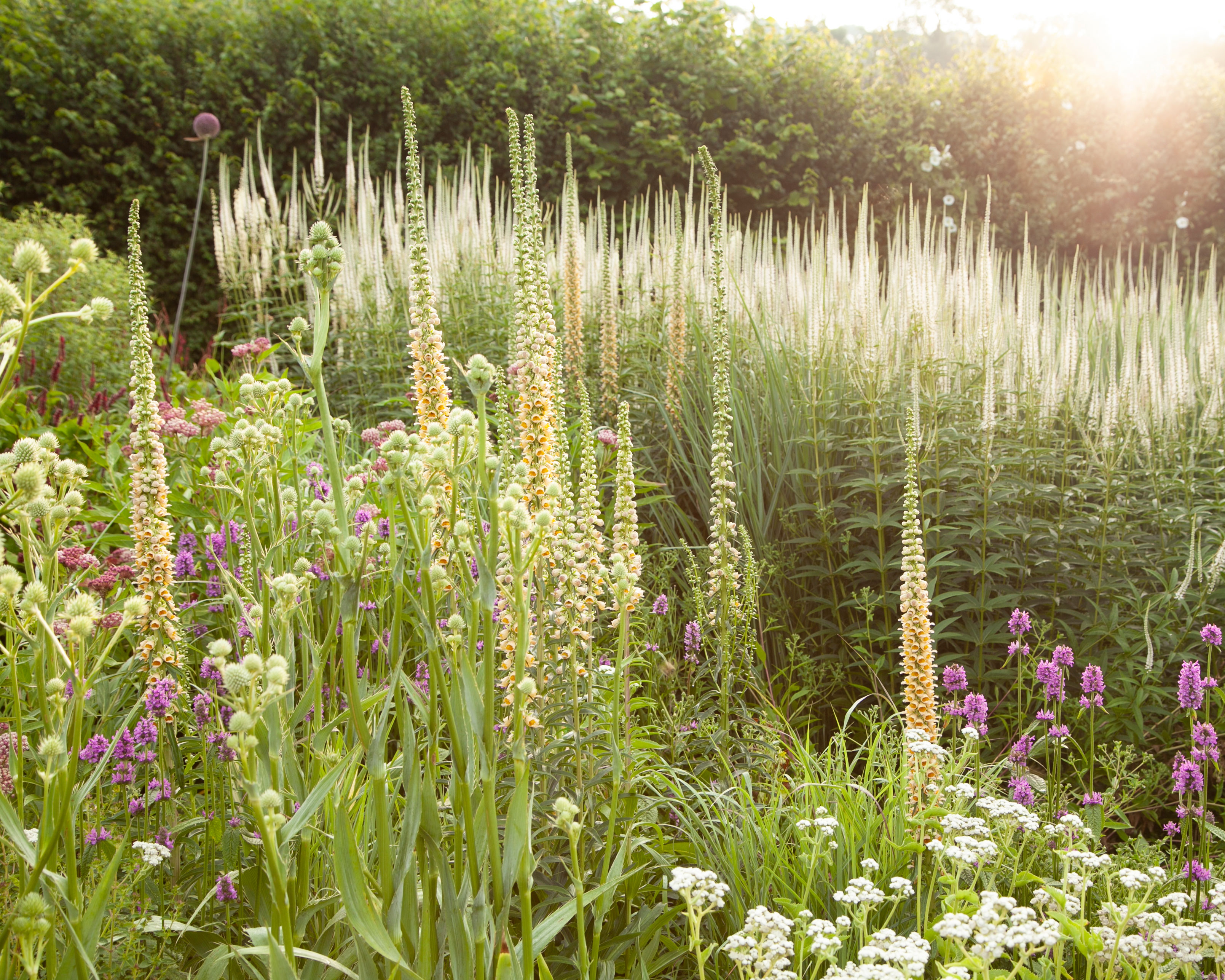
‘I shy away from plants more susceptible to pests and diseases, which are becoming more prevalent with the climate conditions,' explains award-winning garden designer Dan Pearson, who has created a guide to naturalistic garden design for Create Academy.
‘Informality is a useful tool and is here to stay as our gardens become more prone to weather extremes. Someone with a greenfinger is one who responds to change, and informality in garden style allows us to adapt and change,’ Dan adds.
25. Future proof your planting
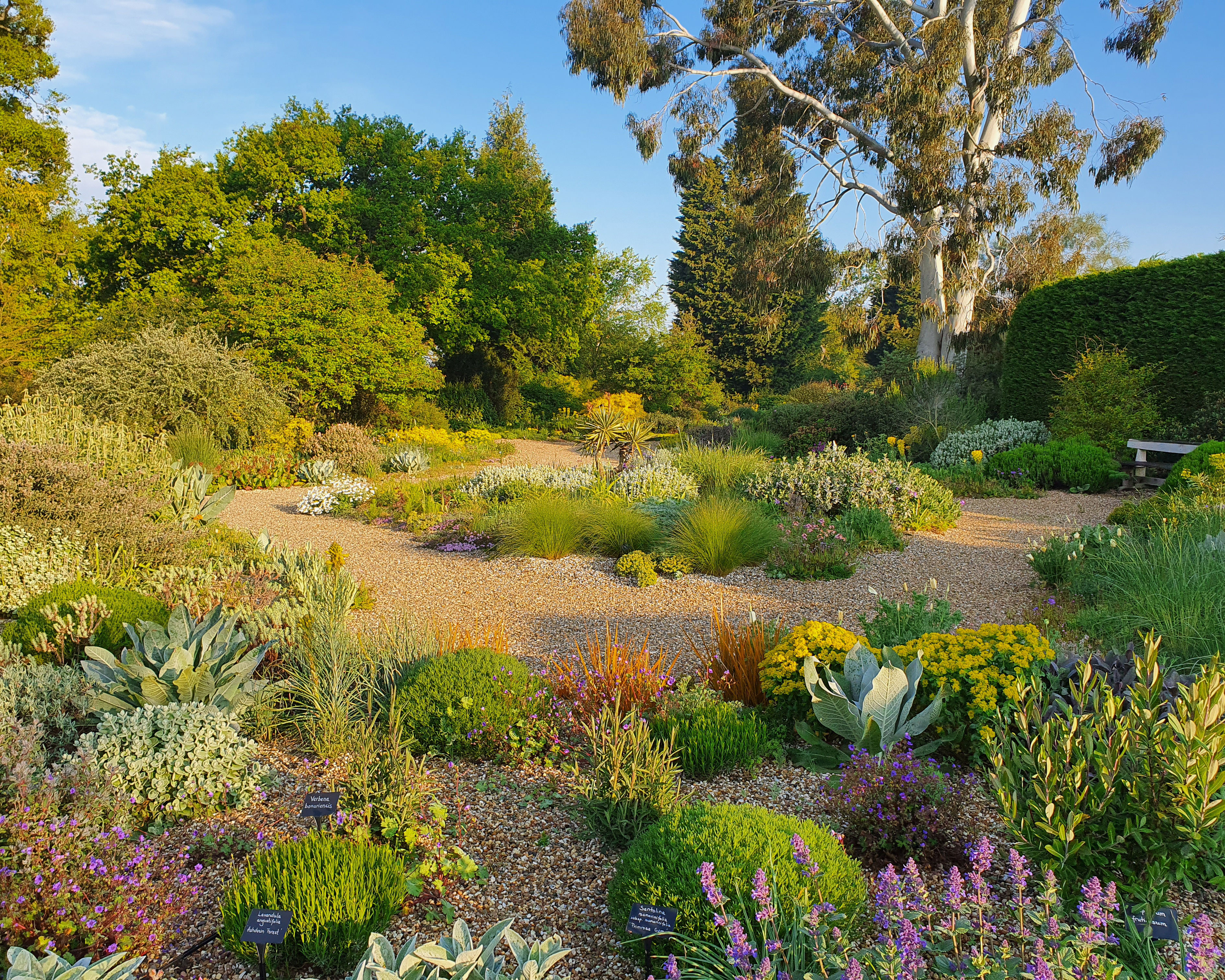
‘Get the basics right when planning your garden to future proof from extremes. Ensure your plant choices can tolerate the soil in your garden and improve drainage and soil structure with grit and mulch. Watering correctly when planting can make all the difference to how robust your plants are,’ explains says garden designer and co-founder of Soto Gardens, Will Williams.
‘We put a lot of effort into preparing soils before we plant. Whether its poor gravelly soil or wet soil. Dig deeply and add organic matter. Just digging and loosening up gives the plants a good start and that's the only chance you have sometimes to help a plant. It is as important as choosing the correct plants,’ says David Ward, garden and nursery director at the internationally renowned Beth Chatto’s Garden and Nursery.
26. Look at what grows locally
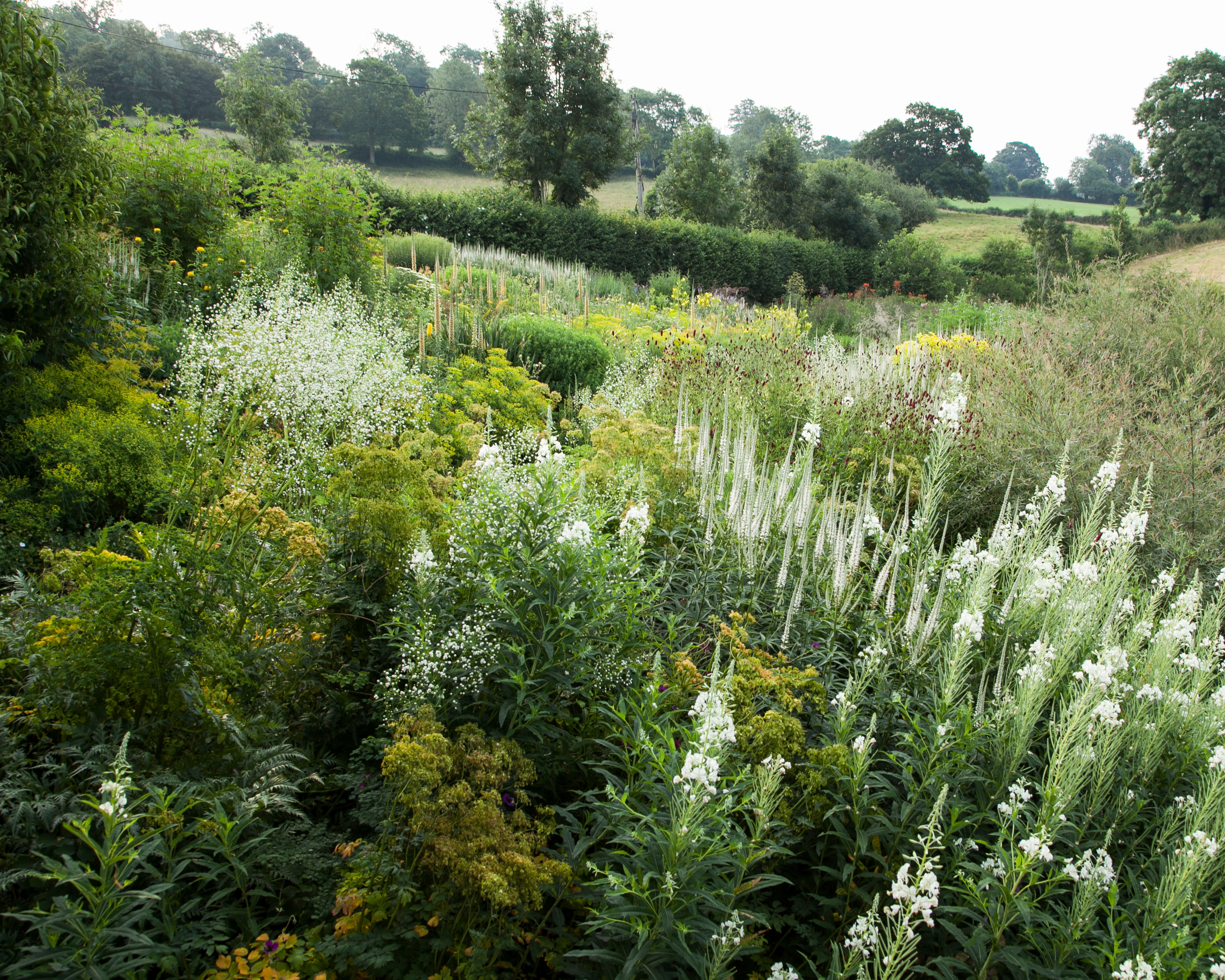
When assessing your garden’s conditions, look at what grows locally and what does well, and also choose plants or shrubs for shade or sun loving plants as appropriate.
'That is a straightforward and easy way of assessing what might grow well in your own garden. You can look at the locale as well as the immediate vicinity. For instance, if birch grows well in the area you know there are acid soil conditions, or if it’s clear it is more alkaline look to plants that thrive well in that type of soil. The most important thing is not to fight the elements,' explains Dan Pearson.
Beth Chatto was the pioneer of right plant, right place. 'For her it was just common sense that you planted plants in conditions that they wanted, and if you forced them, you were fighting against nature, which wasn’t the way to go. So find plants suited to the conditions,' add David Ward.
27. Don't cut down

Trends have changed, and the movement in gardening is towards more wildlife friendly ways of gardening, which can also have the benefit of being low maintenance garden border ideas
'We’re not so quick to cut plants down in winter and instead leave seed heads up as food sources for wildlife,' says David ward.
'The strict formal gardening and traditional ways of gardening have moved over to a "looser" way of gardening. It’s about finding a balance. Not a lowering of standards, just a different way of doing things,' he adds.
'Don’t be too quick to cut plants down, or if you do, then leave the prunings in a little corner for wildlife.'
28. Focus on foliage, form and texture
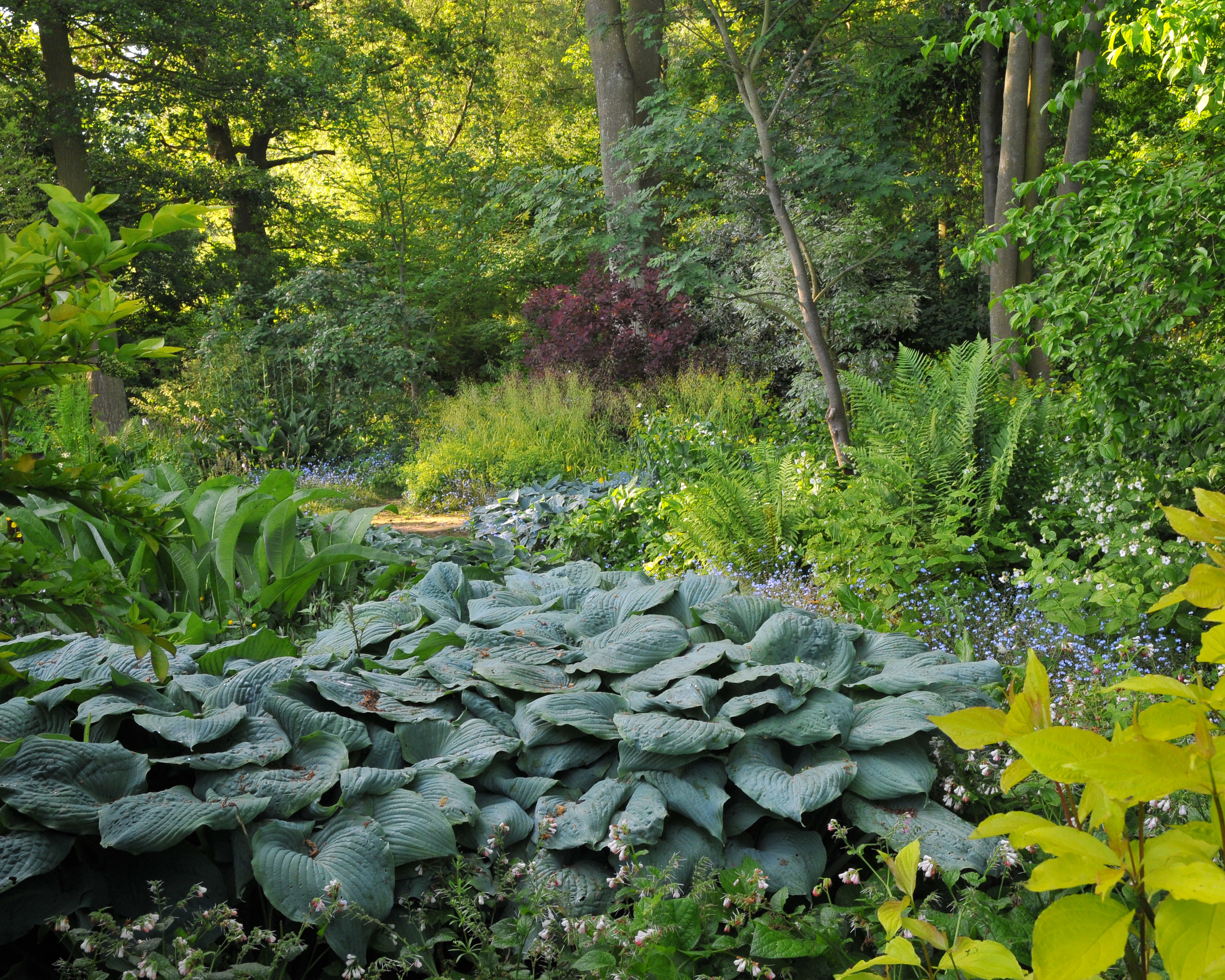
It's not all about flowers. Foliage, form and texture are important to create a longer season of interest for a more sustainable garden.
'Flowers are ephemeral, whereas foliage has a longer season of interest, particularly in shade. Shade loving plants naturally flower in spring to take advantage of light and moisture earlier in year, and then as the overhead canopy comes on you are back to foliage,’ explains David Ward.
What is a sustainable garden?
A sustainable garden is one that gives back rather than takes from its surroundings. Planted with nectar rich native plants and other eco friendly garden ideas means it will be more self-sustaining, requiring little energy or water to make it grow healthily – and certainly no chemicals.
Instead, it should rely on local and natural ways to flourish – from self-grown mulches to home-made composts. An eco-friendly garden should benefit local wildlife, too, providing food and shelter for everything from small animals to essential pollinators.
What is sustainable planting?
Sustainable planting includes using native plants and right plant, right place so that they need less maintenance because they are happy where they are positioned.
Add more shrubs with multi-seasonal interest, self-seeding annuals, and perennials that come back every year – learn how to divide plants to keep them healthy and increase their numbers.
Aim for a diversity of native plant species that are also tough and can cope with the vagaries of climate change.
How can I make my garden sustainable?
To make your garden sustainable then adopt some of the recommended gardening practices and measures as listed above.
'Organic gardening is all about working hand in hand with nature. At Le Manoir we work hard to build a relationship with bugs and encourage wildlife to help us in the garden. Treat all creatures with respect as they all have a place and a role to play within your garden,' explains August Bernstein.
Rachel is senior content editor, and writes gardening content for homesandgardens.com, Homes & Gardens magazine, and its sister titles Period Living Magazine and Country Homes & Interiors. She has written for lifestyle magazines for many years, with a particular focus on gardening, historic houses and arts and crafts, but started out her journalism career in BBC radio, where she enjoyed reporting on and writing programme scripts for all manner of stories. Rachel then moved into regional lifestyle magazines, where the topics she wrote about, and people she interviewed, were as varied and eclectic as they were on radio. Always harboring a passion for homes and gardens, she jumped at the opportunity to work on The English Home and The English Garden magazines for a number of years, before joining the Period Living team.
